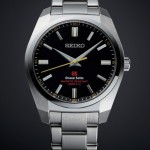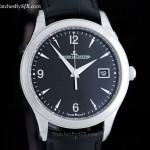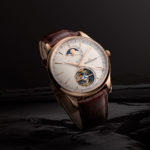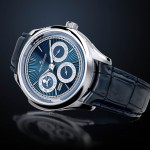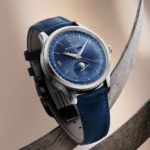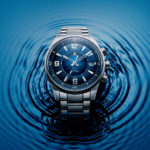Macro Match: Jaeger-LeCoultre Master Control Date vs. Grand Seiko SBGA011 “Snowflake”
The definitive qualities of two entry-level luxury watches.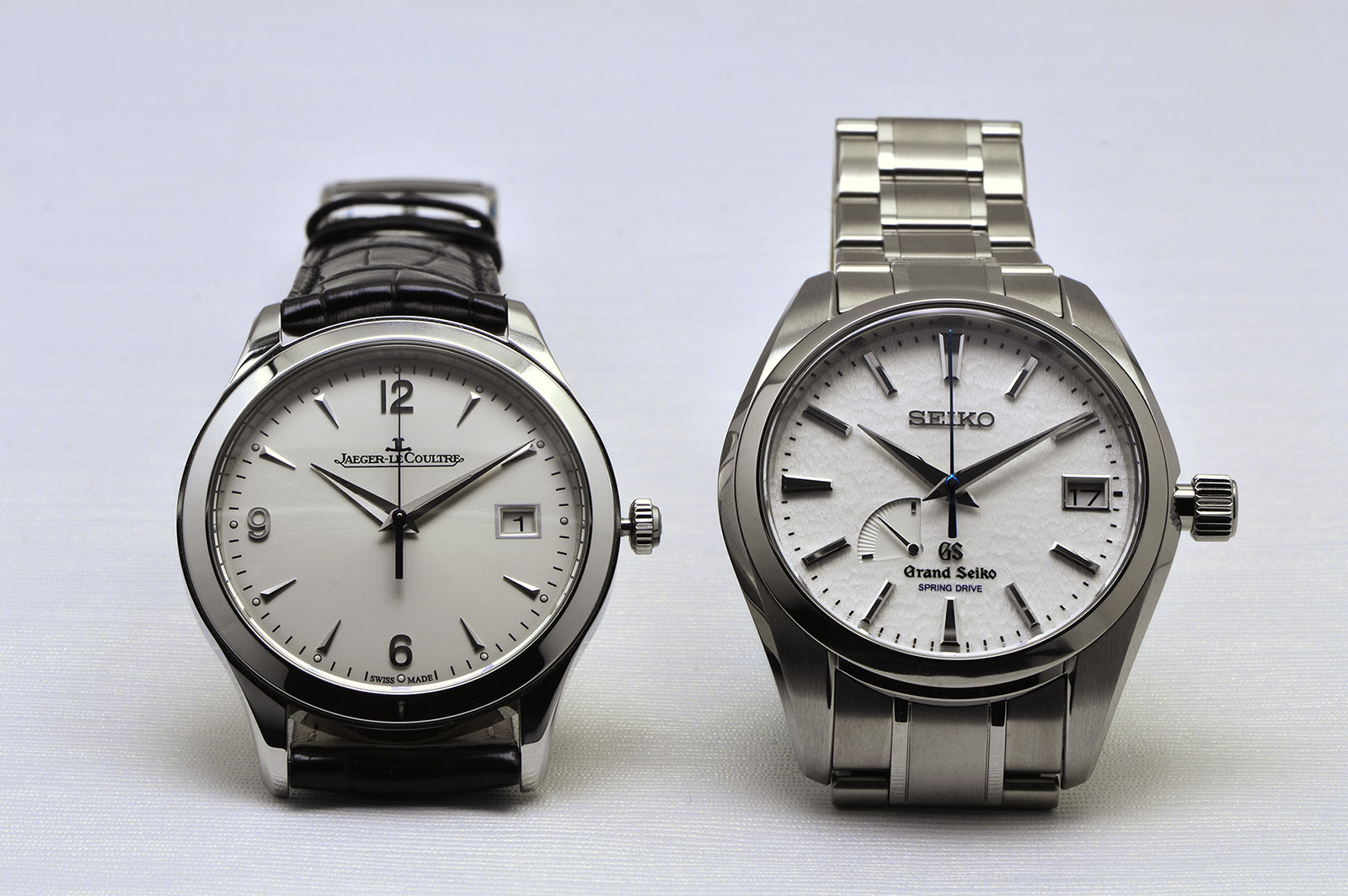
In the competitive market of watches in the mid-luxury segment of US$5000 to US$10,000, practically every design or style can be had, so the intrinsic qualities of a watch in terms of construction and finish are crucial in comparing one watch against another. Here we investigate two popular models in the category that are similarly priced and functionally comparable, yet with contrasting qualities in country of origin, design and execution.
The Jaeger-LeCoultre Master Control Date (ref. 1548420) represents the brand’s entry-level offer, a simple, three-handed dress watch with central seconds and a date, as well as an attractively decorated movement. Other versions have since been introduced, but the model with Dauphine hands is arguably the definitive look, having been designed in the early 1990s. It embodies the brand’s core competence of high-quality watchmaking on a mass scale.
Meanwhile, Grand Seiko is Seiko’s luxury label with eminently classical design (as opposed to the Credor brand that take a modern approach to styling). Gaining more traction after taking its distribution overseas in 2010, Grand Seiko has since garnered attention from enthusiasts for its exemplary case and dial finish. The Grand Seiko Spring Drive “Snowflake” (ref. SBGA011) (now renamed the SBGA211 with the “Seiko” logo on the dial removed) is one of the brand’s quintessential timepieces with its white, textured dial and Spring Drive movement.
A quick aesthetic overview
With both timepieces side-by-side, it is readily apparent that the Master Control Date is a classical thin dress watch, with a 39mm stainless steel case that’s 8.5mm high. This example is fitted on a leather strap with folding buckle, which is the most common combination, however the watch is also available with a steel bracelet.
Meanwhile, the Snowflake seemingly towers over its rival at 41mm by 12.5mm, while matched with a bracelet as default. Being made of titanium, which is nearly half the density of steel, it feels surprisingly lightweight in contrast to the Master Control, yet exudes a solid feel in the hand.
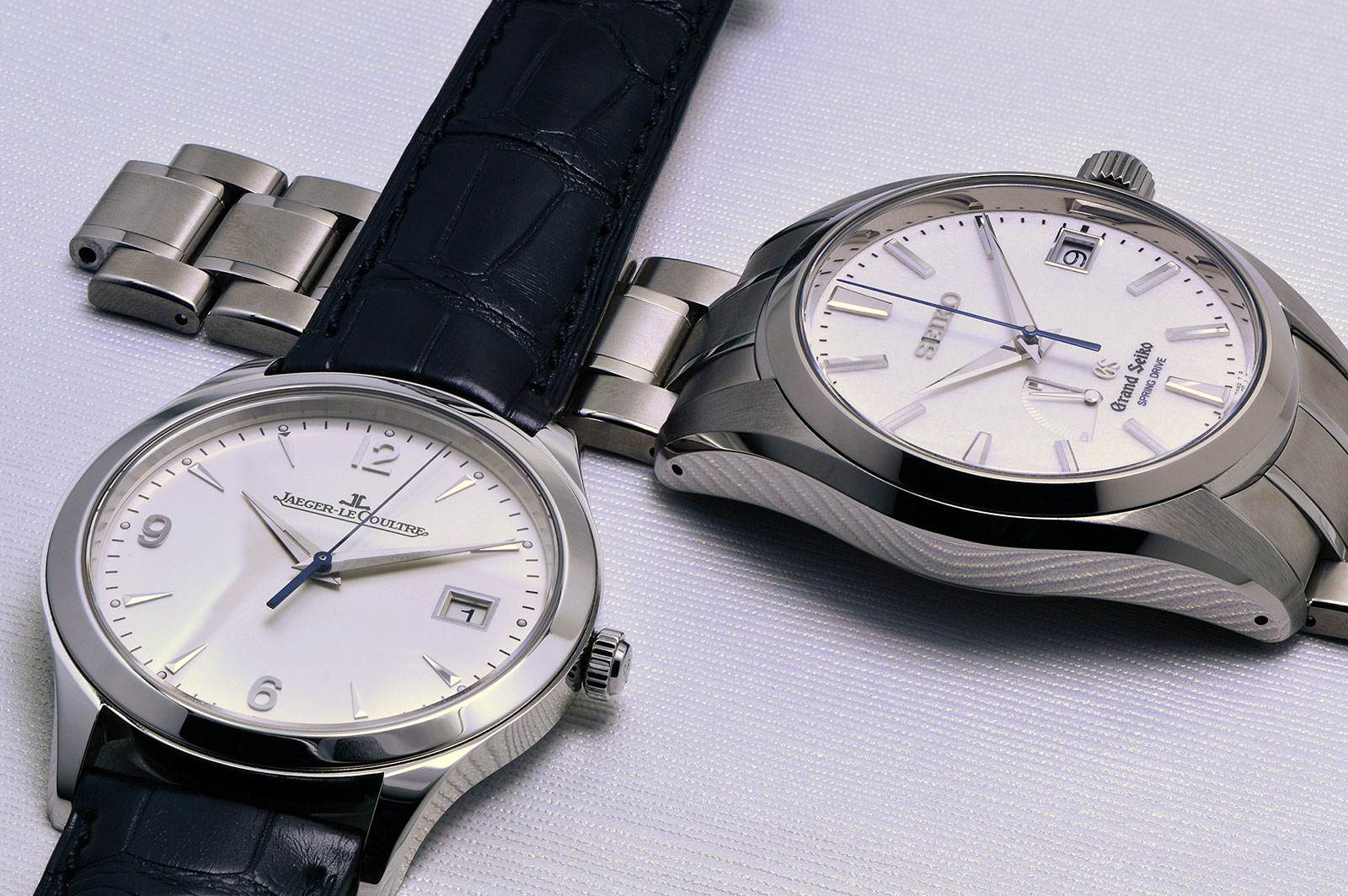
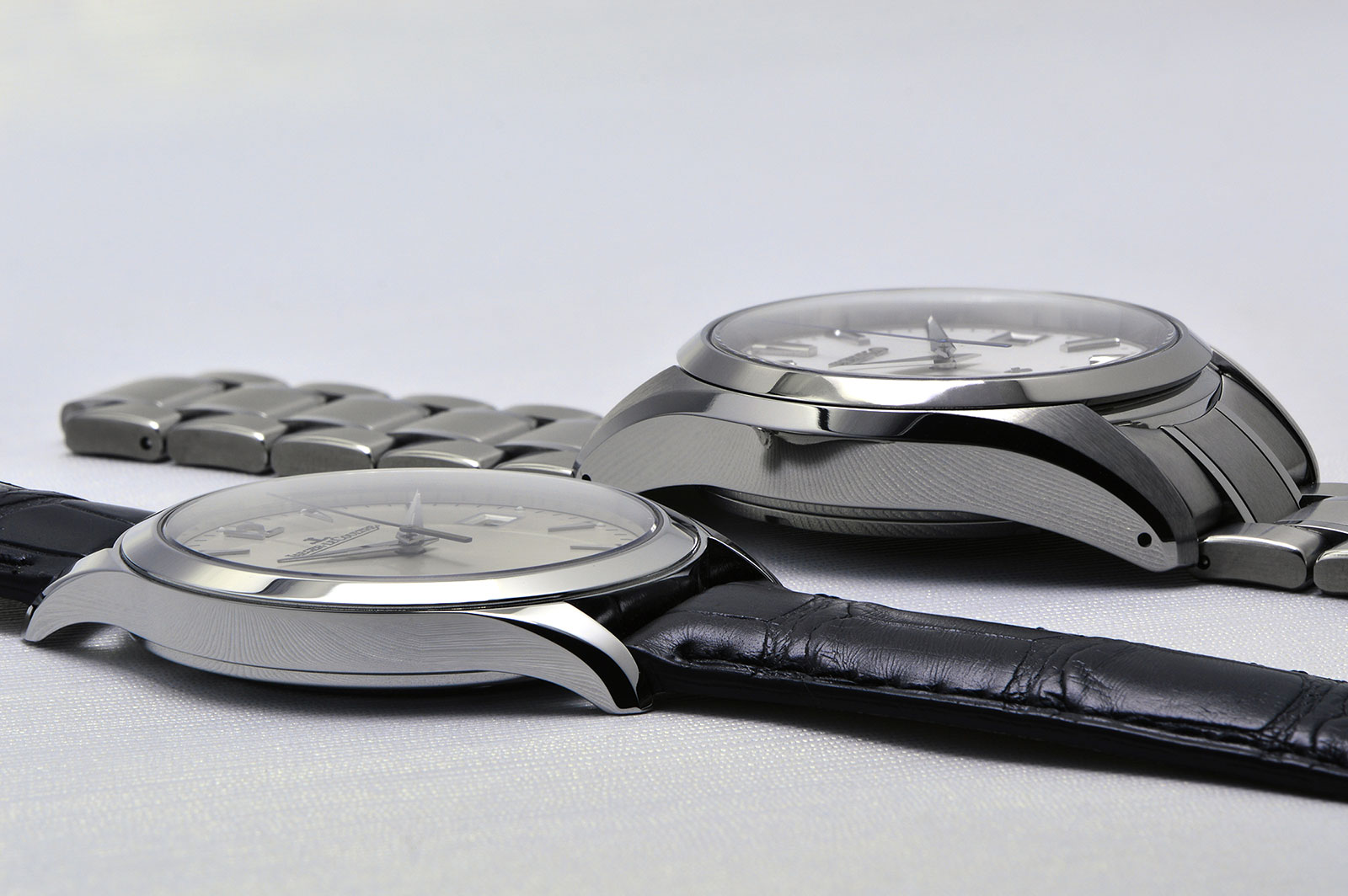
The difference in heft and size is more noticeable viewing the case profiles. The Master Control case is entirely polished on all surfaces with smooth flowing curves which adds to its svelte presentation. The fine degree of polish of steel allows for near distortion-free reflections along the surfaces.
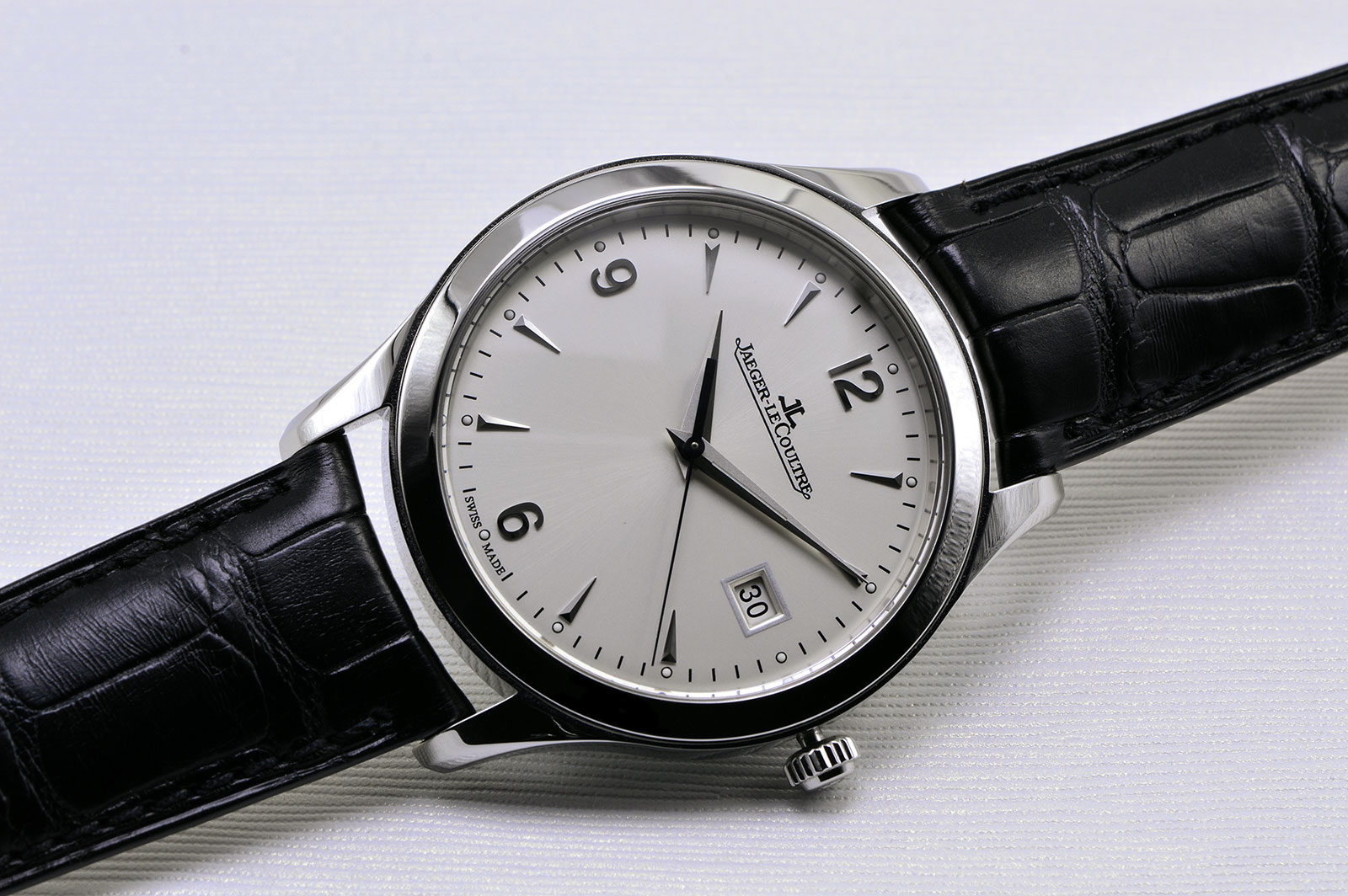
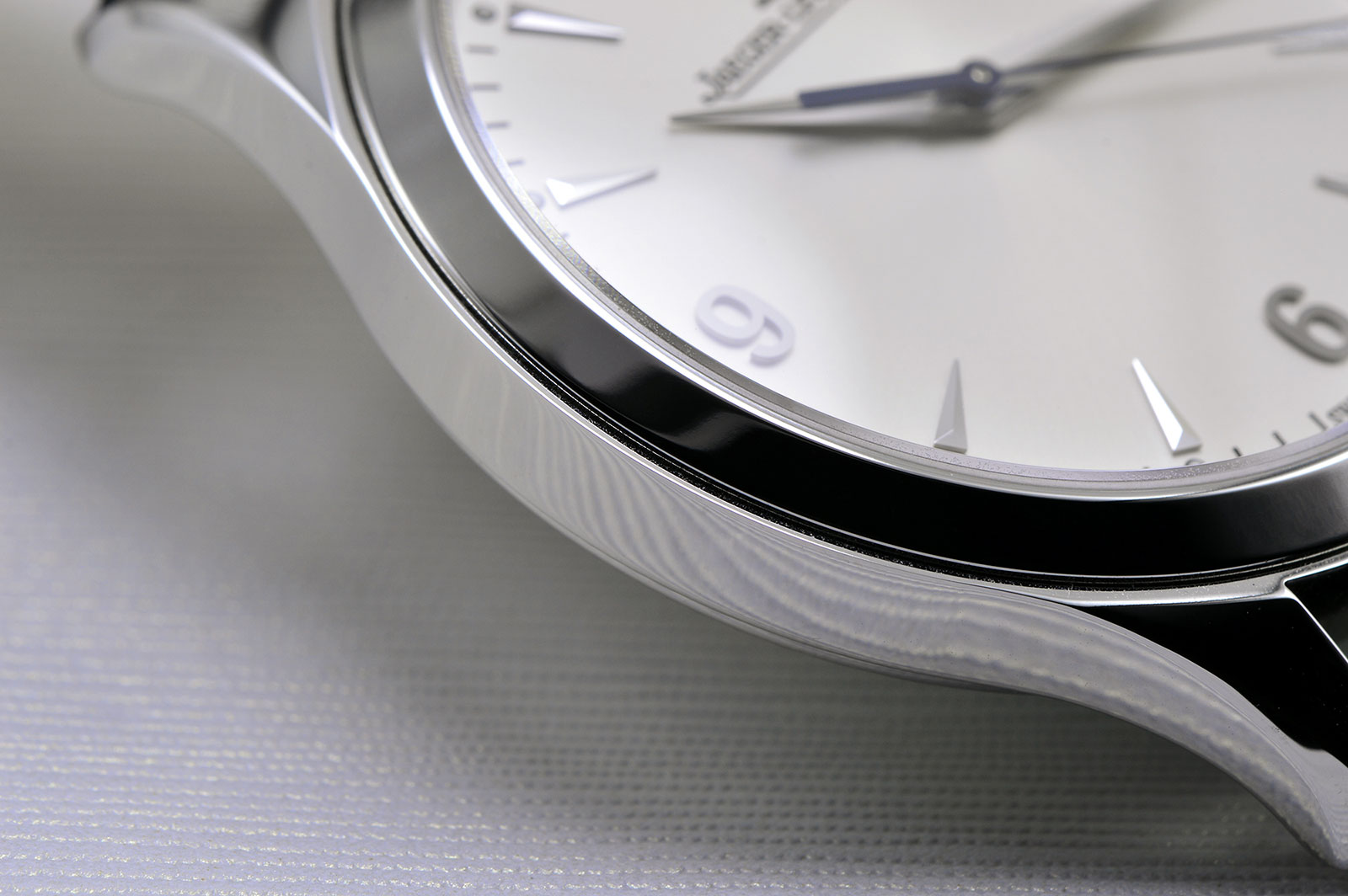
The lugs are faceted slightly with a tapering bevel down the lug, further accentuating the slender case profile.
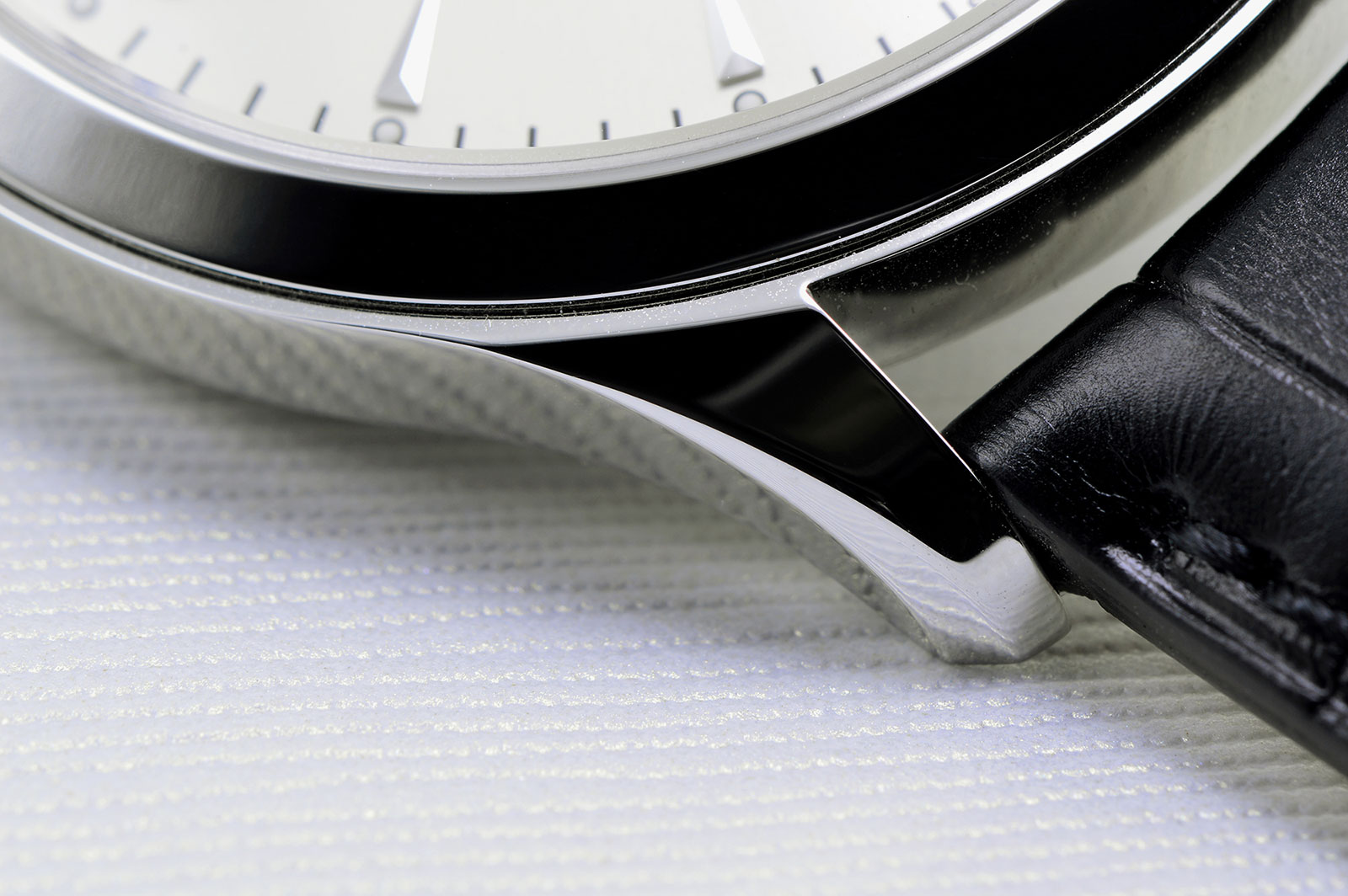
Meanwhile, the Snowflake stands out with a more elaborate case construction. A combination of fine mirror polishing (done via a technique known as Zaratsu that requires a specialized machine) contrasting with clean, brushed surfaces makes it apparent that case work is much more involved in comparison. A well-defined polished bevel runs along the entire case length to slightly mask the apparent thickness of the case.
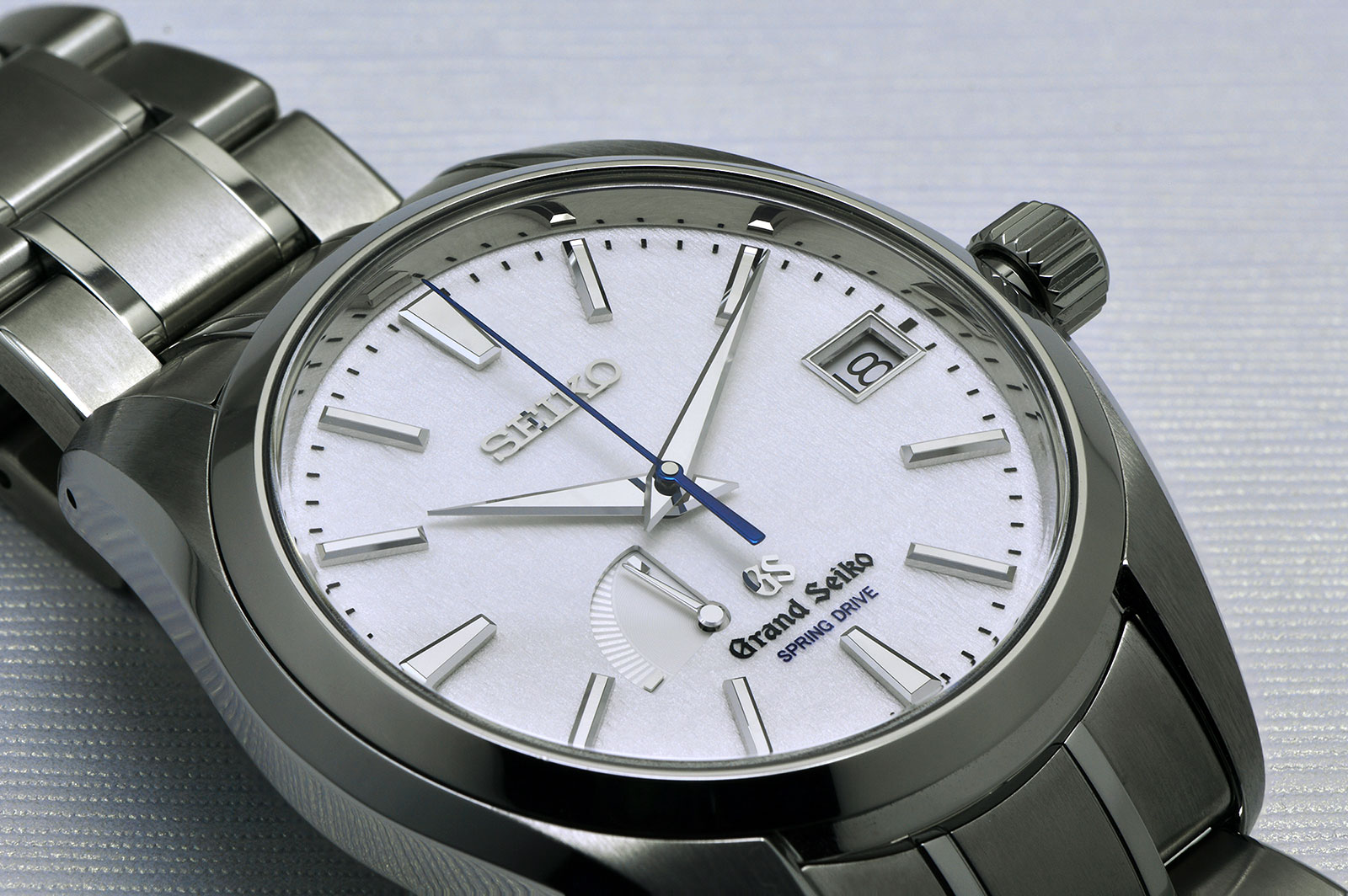
Perhaps the only caveat is the mirror polished titanium surface has a very slight grained, or “orange peel”, texture when viewed up-close compared to perfectly smooth polished steel. That is an inevitable characteristic of mirror finished titanium, and here the surface is smoother than any other similar finished titanium done by other watch brands.
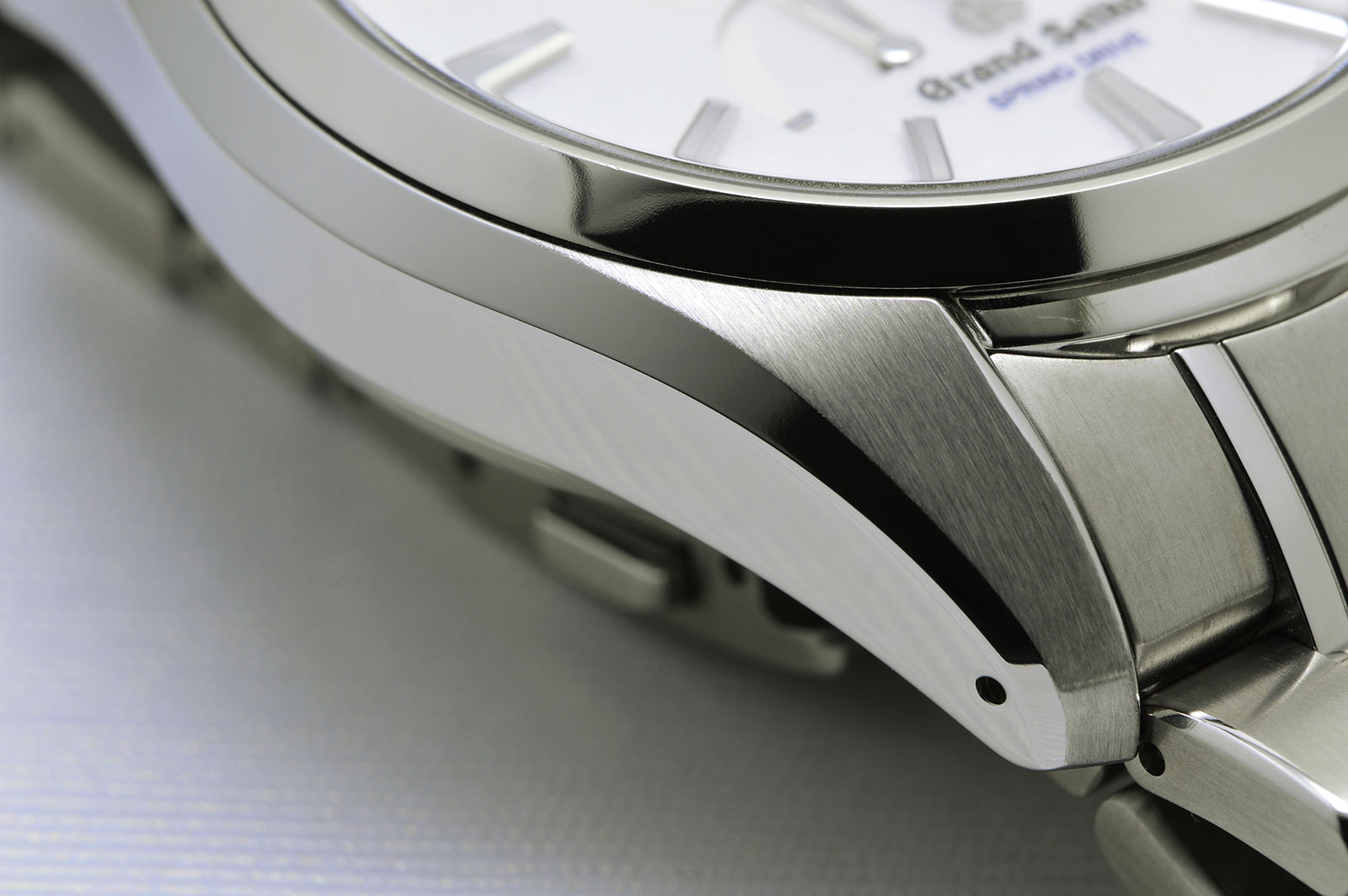
Further attention to detail is evident on the crown. Admirably detailed for a relatively diminutive part, the Snowflake’s crown exhibits a polished “GS” logo raised in relief against a frosted recess. The Master Control on the other hand, has a smaller crown with a raised logo that while well executed, is simpler in detail than the GS.
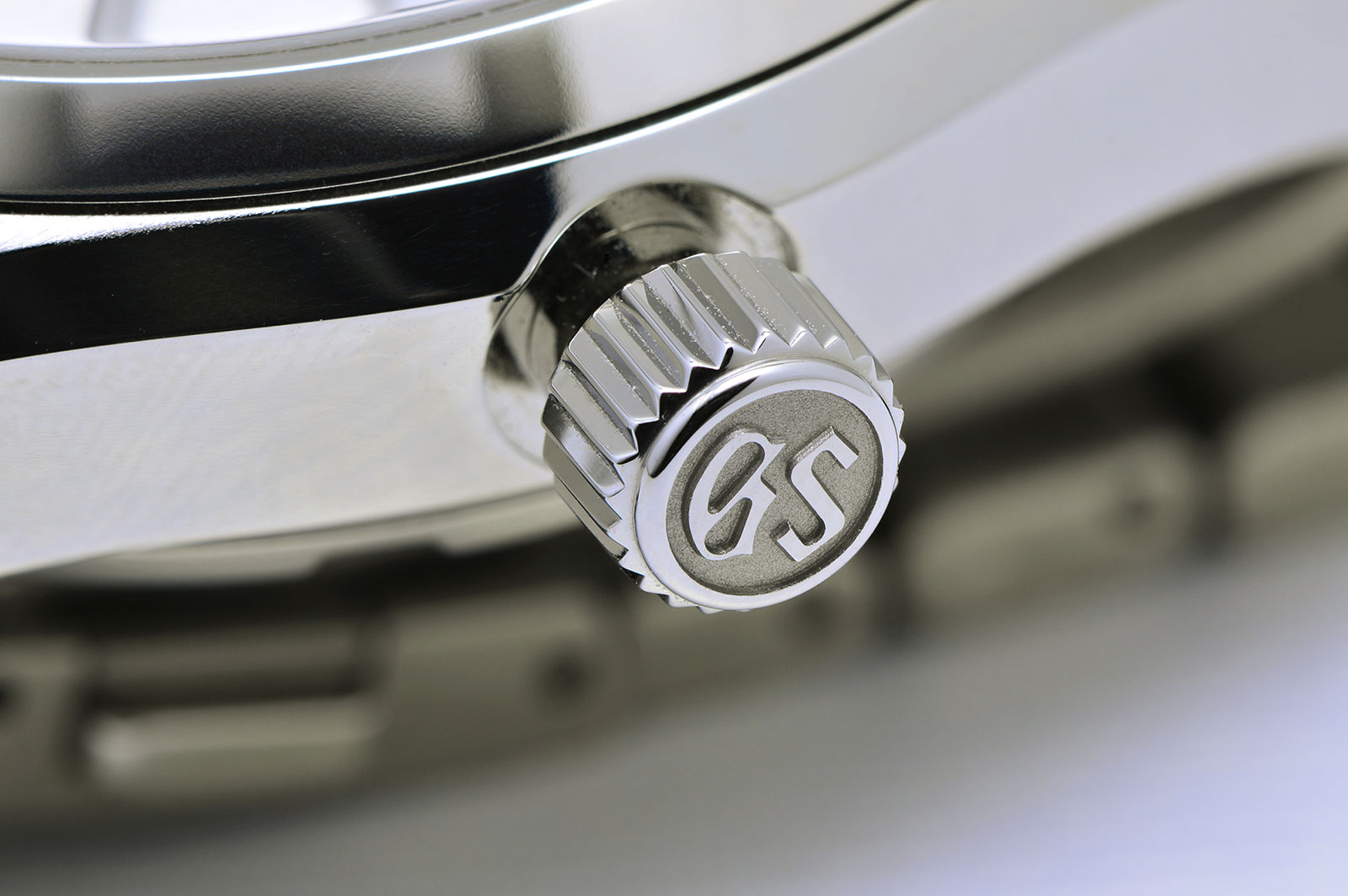
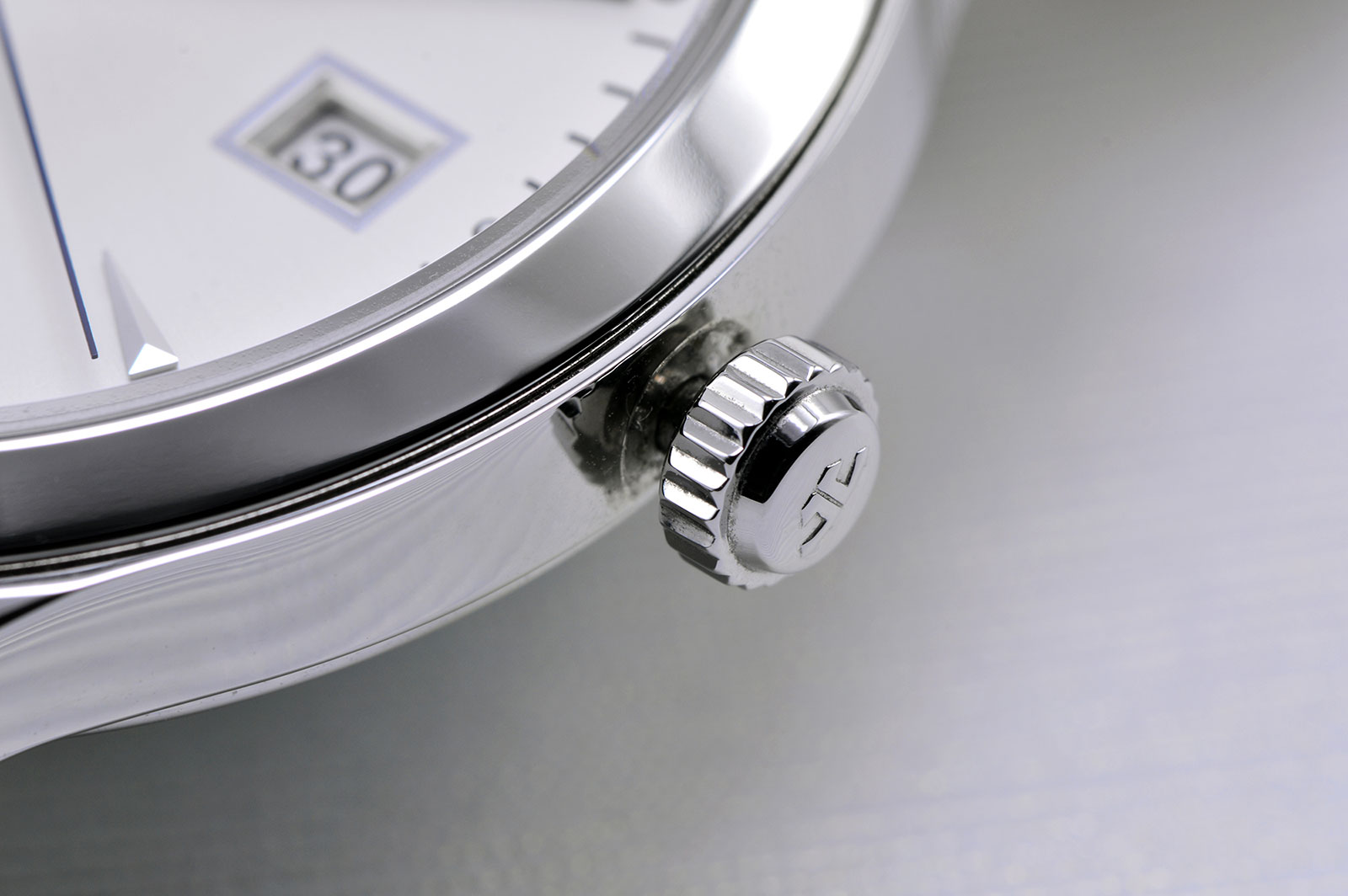
Dials
The definitive feature of the Snowflake is the dial, the main attraction that is worth a closer look. An oft told tale, the origin of its unusual texture is said to recreate the snowy landscape around Shiojiri in Japan’s Nagano prefecture, where the factory that produces Spring Drive watches is located.
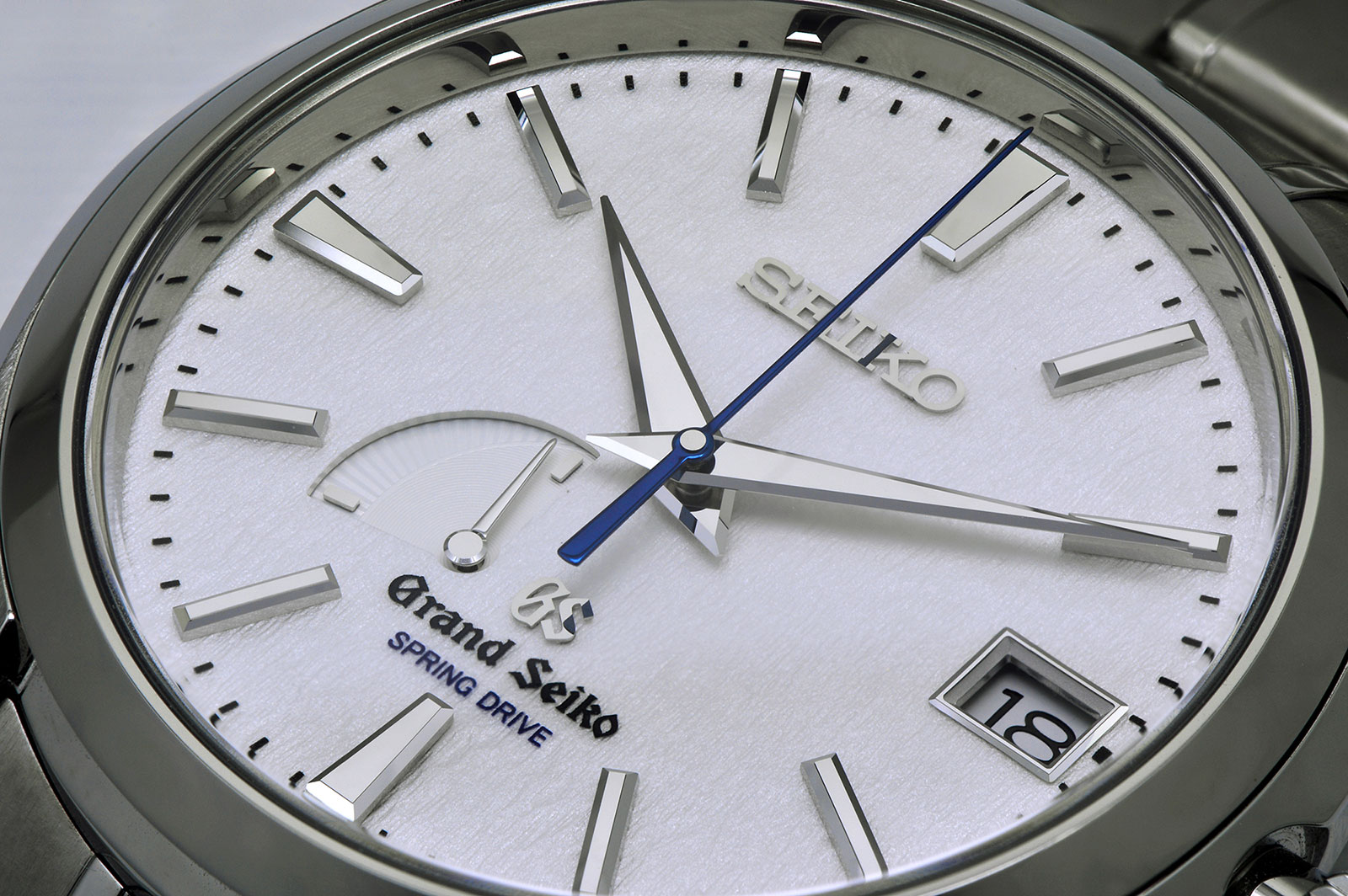
Under magnification the dial reveals its stellar finish. The white directionally grained surface acts as the canvas against which the highly polished indices and prints are applied.
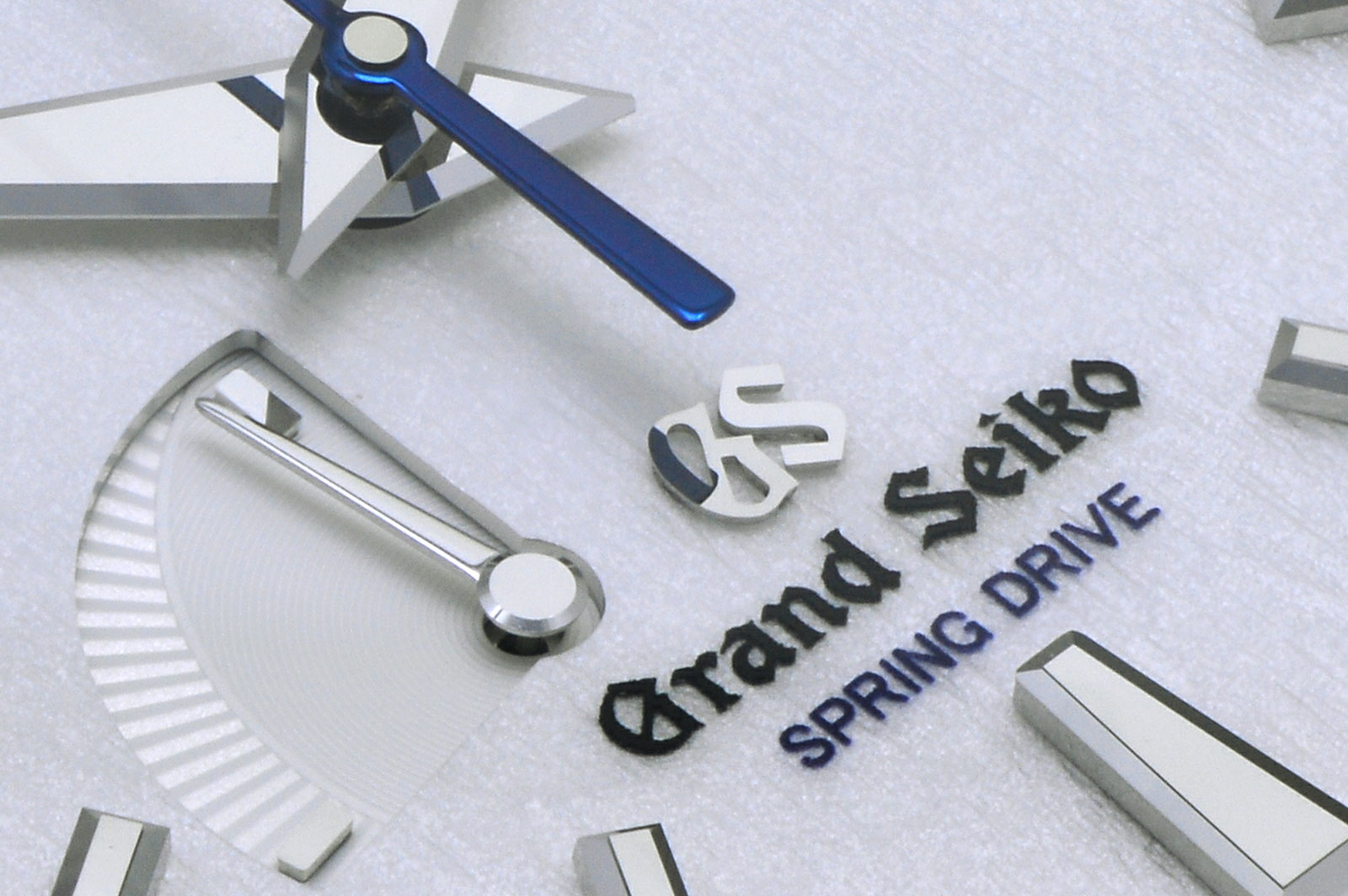
Especially noteworthy are the indices that have a slight but visible raised step at the very top, a detail that’s visible when viewed from the side and light reflects at the right angle. Eerily finished to near perfect straightness despite dimensions thinner than a human hair, it is an impressive detail that could have been omitted, yet was done, and done well.
Furthermore, the fan-shaped recess for the power reserve indicator has a combination of finely applied concentric stamping (azurage) and radial guilloche finish for added visual complexity. Even the edges of the recess are polished, which visibly reflects the surface of the power reserve display beneath it.
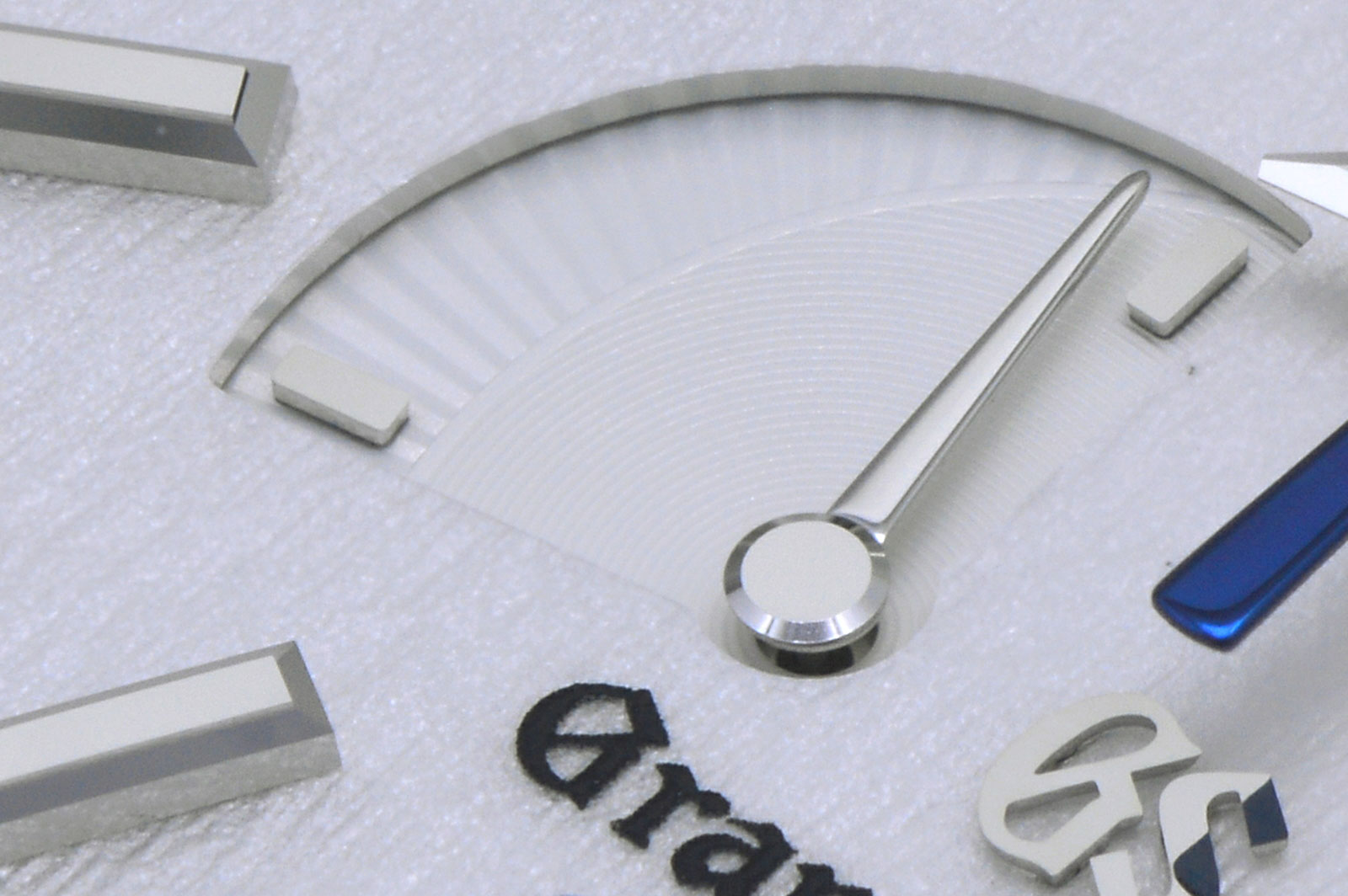
Equally well done are the hands, with chunky dauphine hour and minute hands of substantial thickness having faultlessly polished flat angular facets all around, as can be seen by the undistorted reflection of the surrounding details on the hands. Note also the blued seconds hand which has a polished cap that covers the canon pinion in the central axis of the hands.
The cumulative and varied finishes across the case, dial and hands illustrates the admirable thoroughness and effort that Grand Seiko puts into their timepieces, which provides immense value for the level of quality achieved – perhaps second to none in its class.
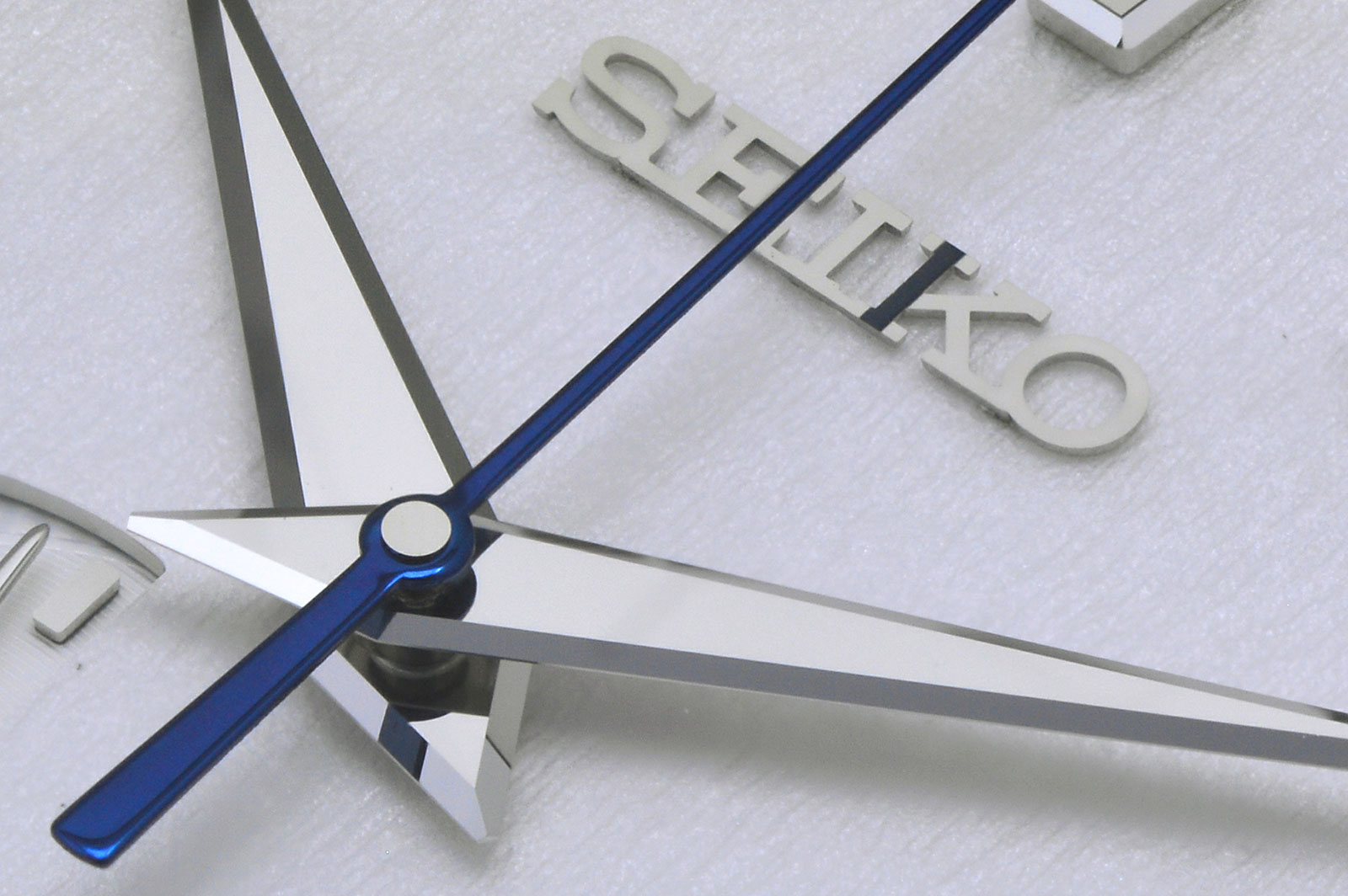
Not to forget the Master Control, which has a well-executed dial, albeit one that falls short of the Snowflake, having a simpler sunburst finish. Nonetheless, it still presents a good, sober dress watch dial with coherent elements and finish.
Notable features of the dial are the applied numerals at the quarters, finished in a delectable flat polish, providing a contrast to the accompanying faceted triangular indices every five minutes.
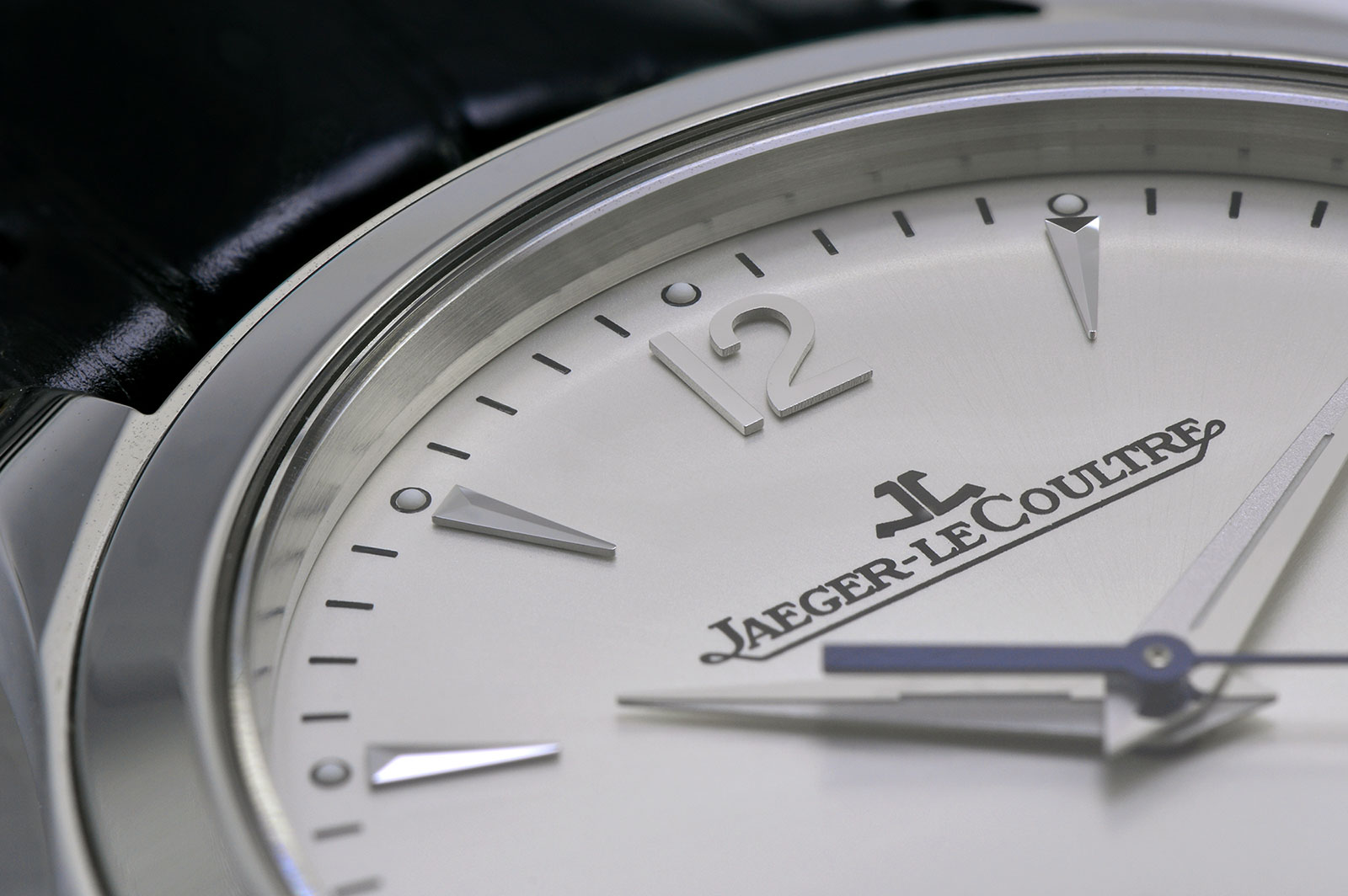
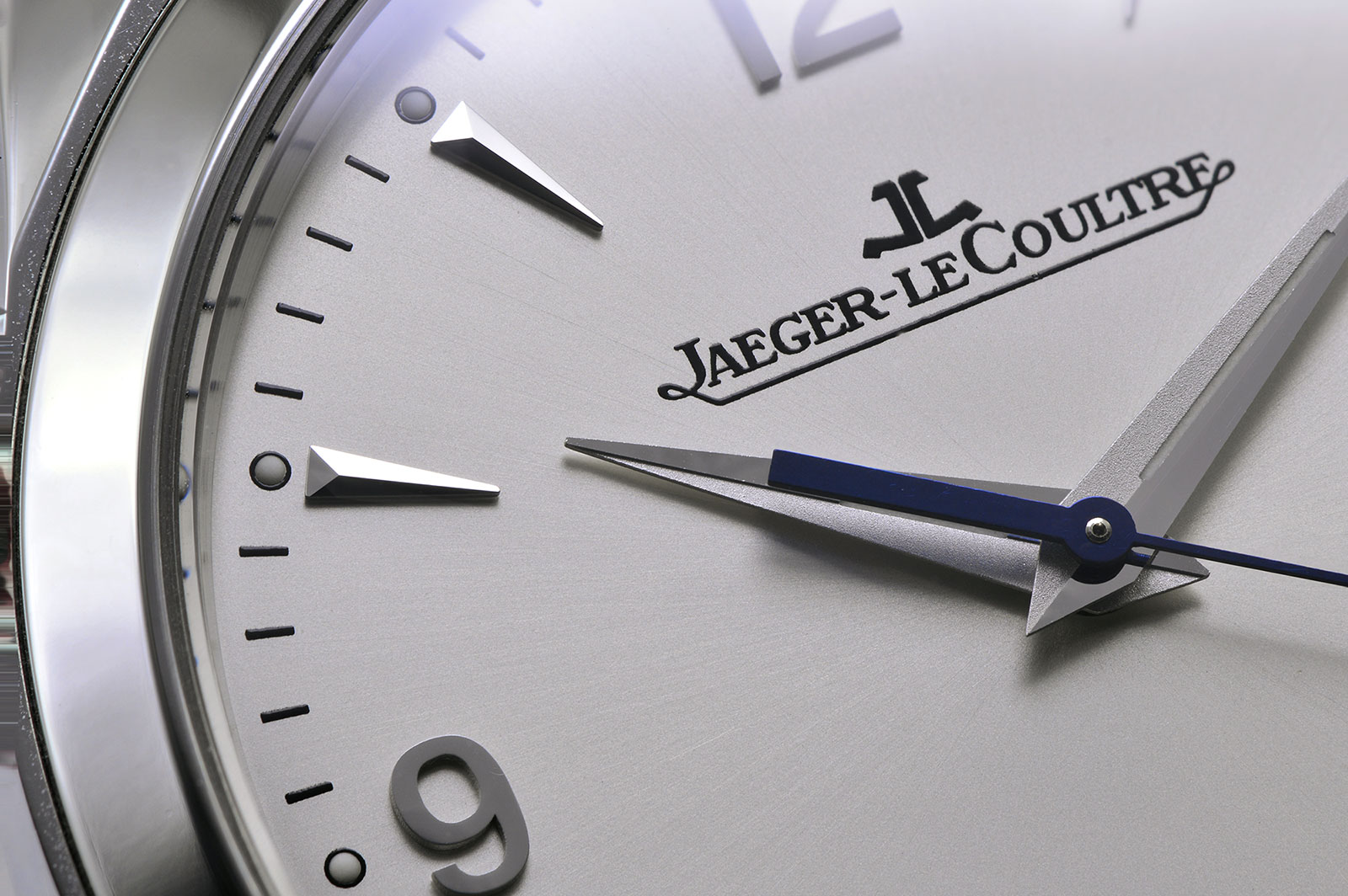
The hands deserve a closer look as one may easily overlook their subtle details. The dauphine hour and minute hands are not simply flat. Instead, they have a recessed channel down the middle for lume, a valley filled with Super-Luminova. Of interest however are the surfaces – lengthwise halves of the hour and minute hands are grained for a matte finish, whilst the other half is flat polished, a contrast that provides an interesting three-dimensional effect under light and also improved legibility.
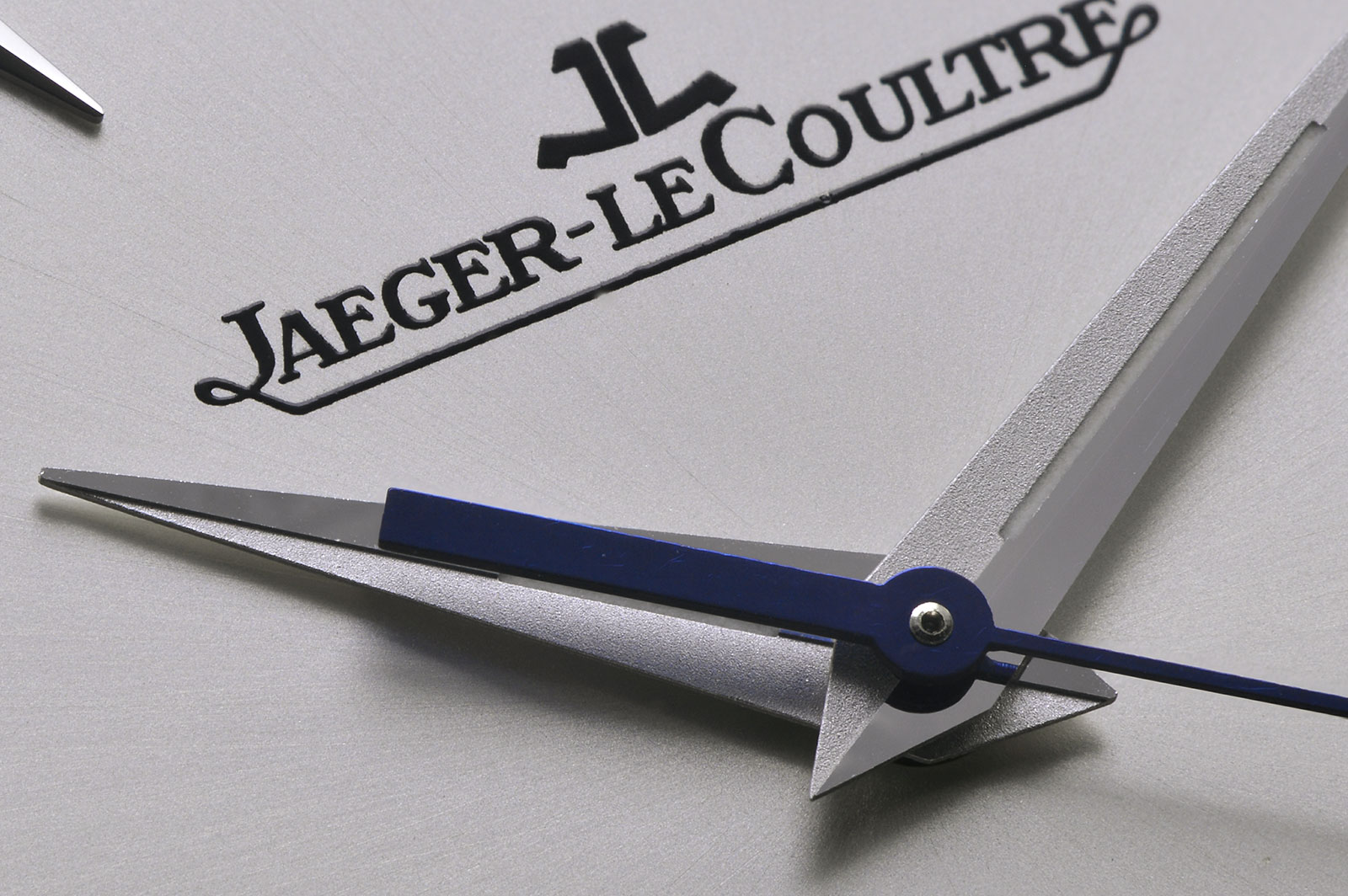
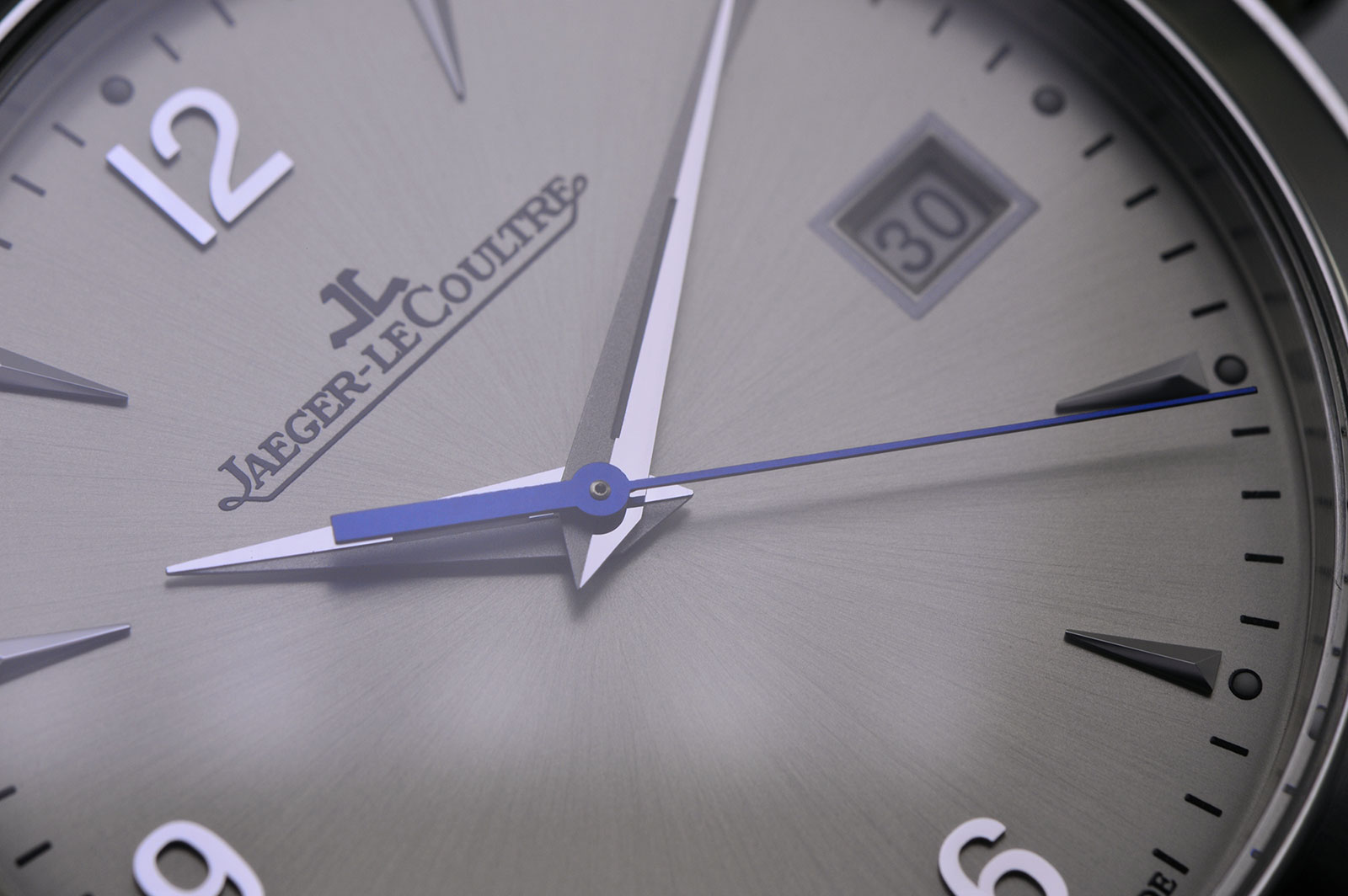
The date window is outlined with a printed, silver lacquer square instead of an applied metal frame. The latter may be more desirable, and something found on the Grand Seiko.
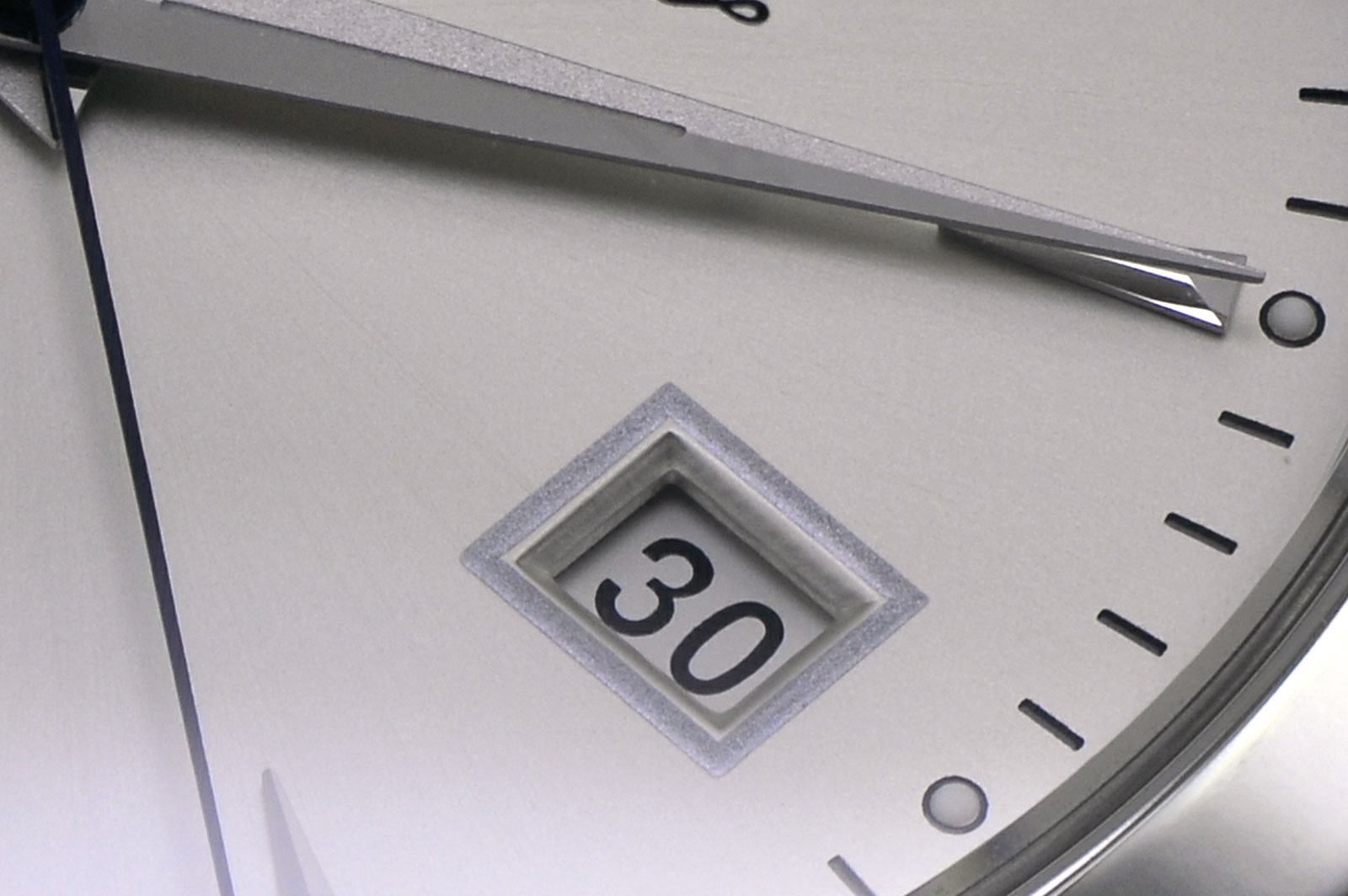
Despite the overall design coherency and execution, the Master Control falls short of the microscopically fine level of detail that the Snowflake dial possesses.
Movements
On the flip side, Jaeger-LeCoultre demonstrates its traditional prowess with the cal. 899. While obviously not of the highest, spare-no-expense haute horlogerie standards, it is the coherency of the many applied finishes that make it an attractive option amongst entry-level watches.
It should be noted that the movement shown here is the first generation, which has a different rotor and bridge finishing compared to the latest versions. The current generation of the movement has a simpler one-piece solid gold rotor forming an oversized JLC logo, while the bridges are finished with linear Côtes de Genève. This revemp started with the Geophysic True Second released in 2015 and is now standard in all models.
As seen here, the old-style rotor presented is the quintessential 1990s luxury rotor construction, consisting of a brass disc with a fixed, 22k gold peripheral weight for rotational inertia. Additionally, the rotor itself and the bridges underneath are decorated with relatively uncommon circular Côtes de Genève, done carefully so that the stripes align with each other and the shape of the bridges – providing an interesting visual spectacle.
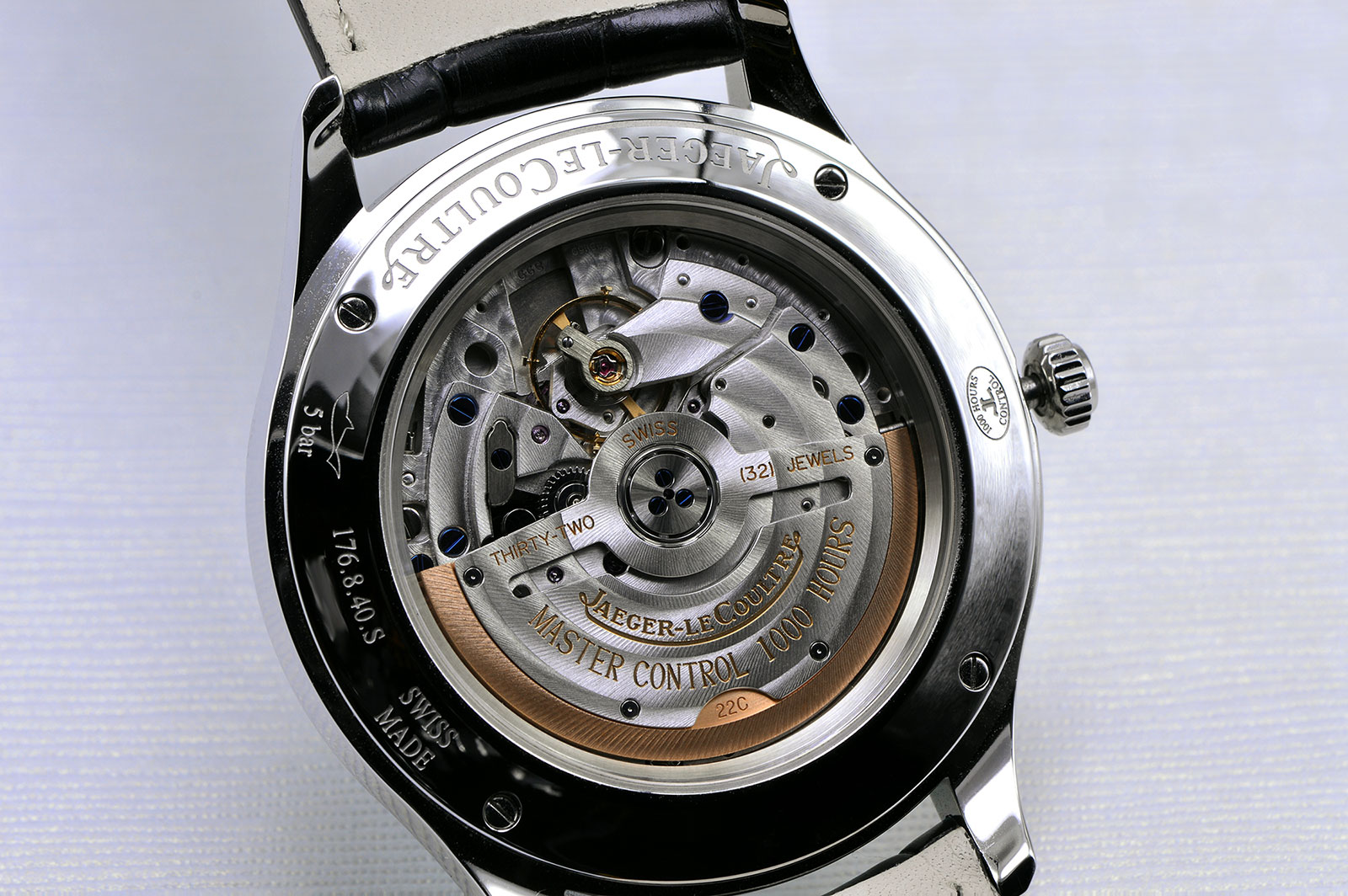
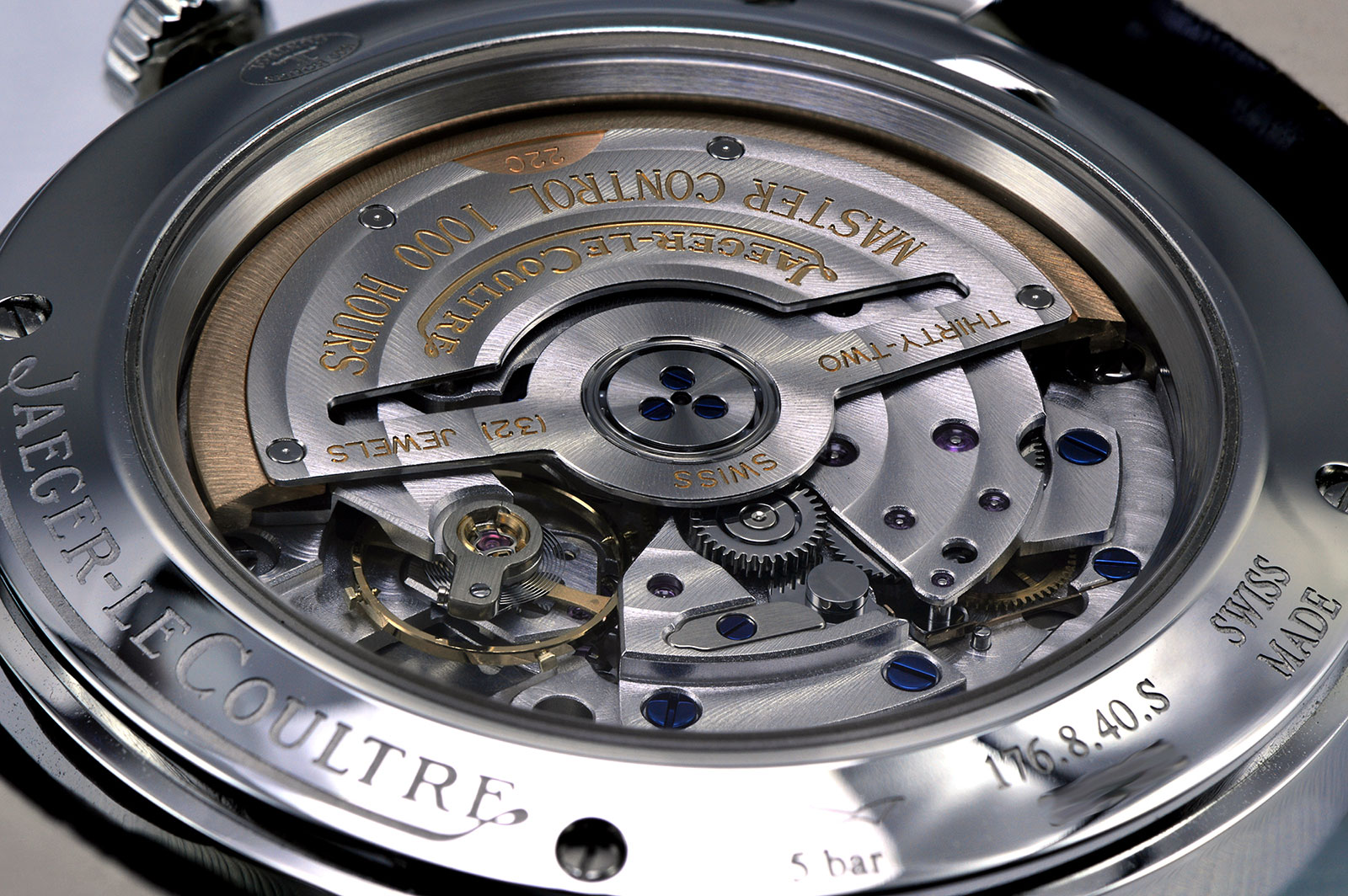
While on the topic of the rotor, the cal. 899 borrows some innovations from Jaeger-LeCoultre’s line of Autotractor movements introduced more than a decade ago. The most prominent feature is the use of ceramic ball bearings in the winding mechanism for durability and to do away with lubrication. The white ceramic ball bearings are visible just under the unidirectional rotor and winding wheel.
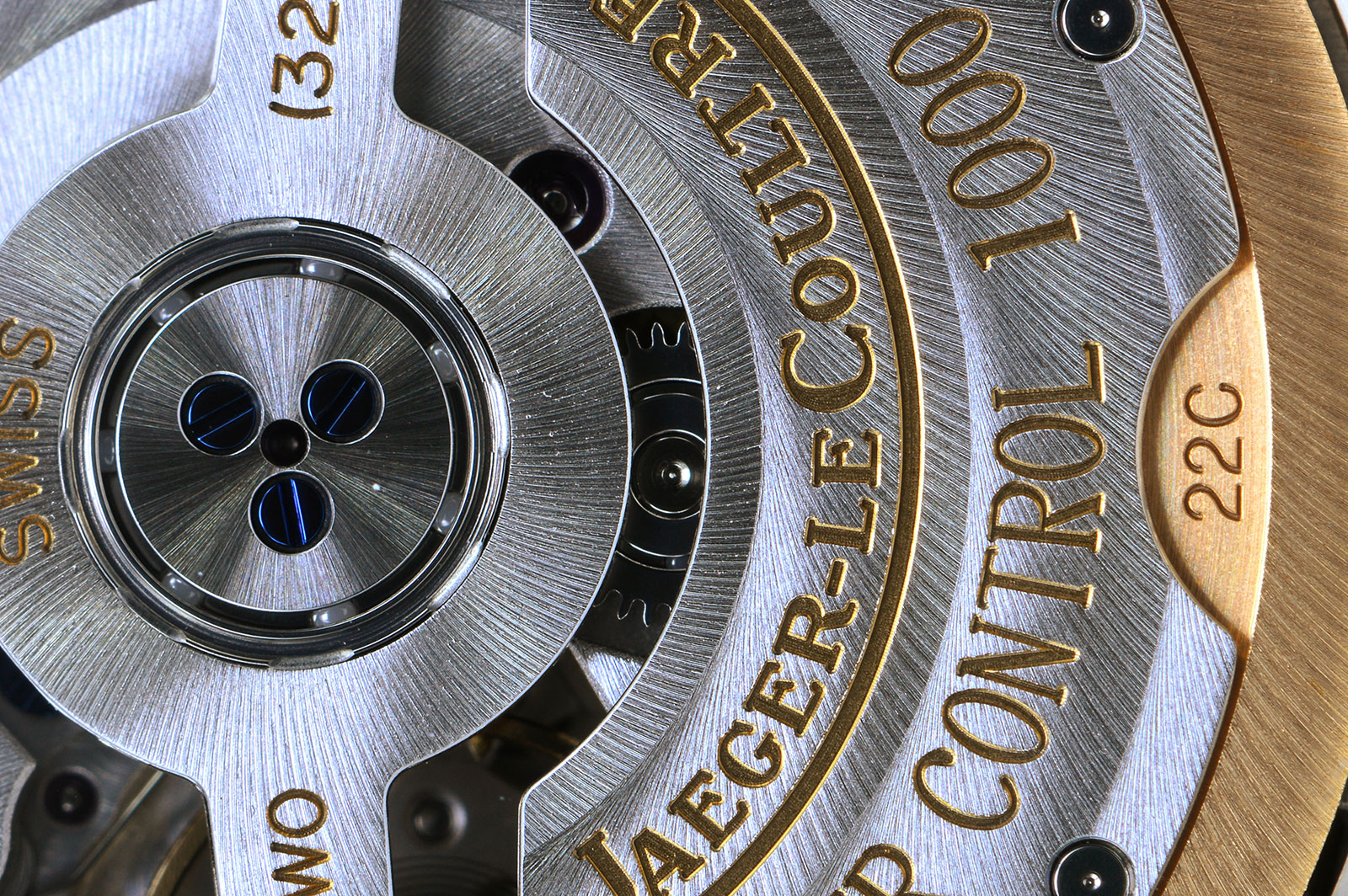
Most screws in the movement are heat-blued, providing colour contrast to the rhodium-plated bridges. Further contrast is provided by the gilded, machine engraved lettering that is neatly executed and free of burrs. The bridges, meanwhile, have the defined, embossed bevels on their edges, as well as the countersinks for jewels and screws, with perlage applied to the main plate underneath.
An interesting detail is a round, black-polished cylinder hub that appears to be part of the automatic winding mechanism – this is an uncommon, high-end finish for a timepiece of this category.
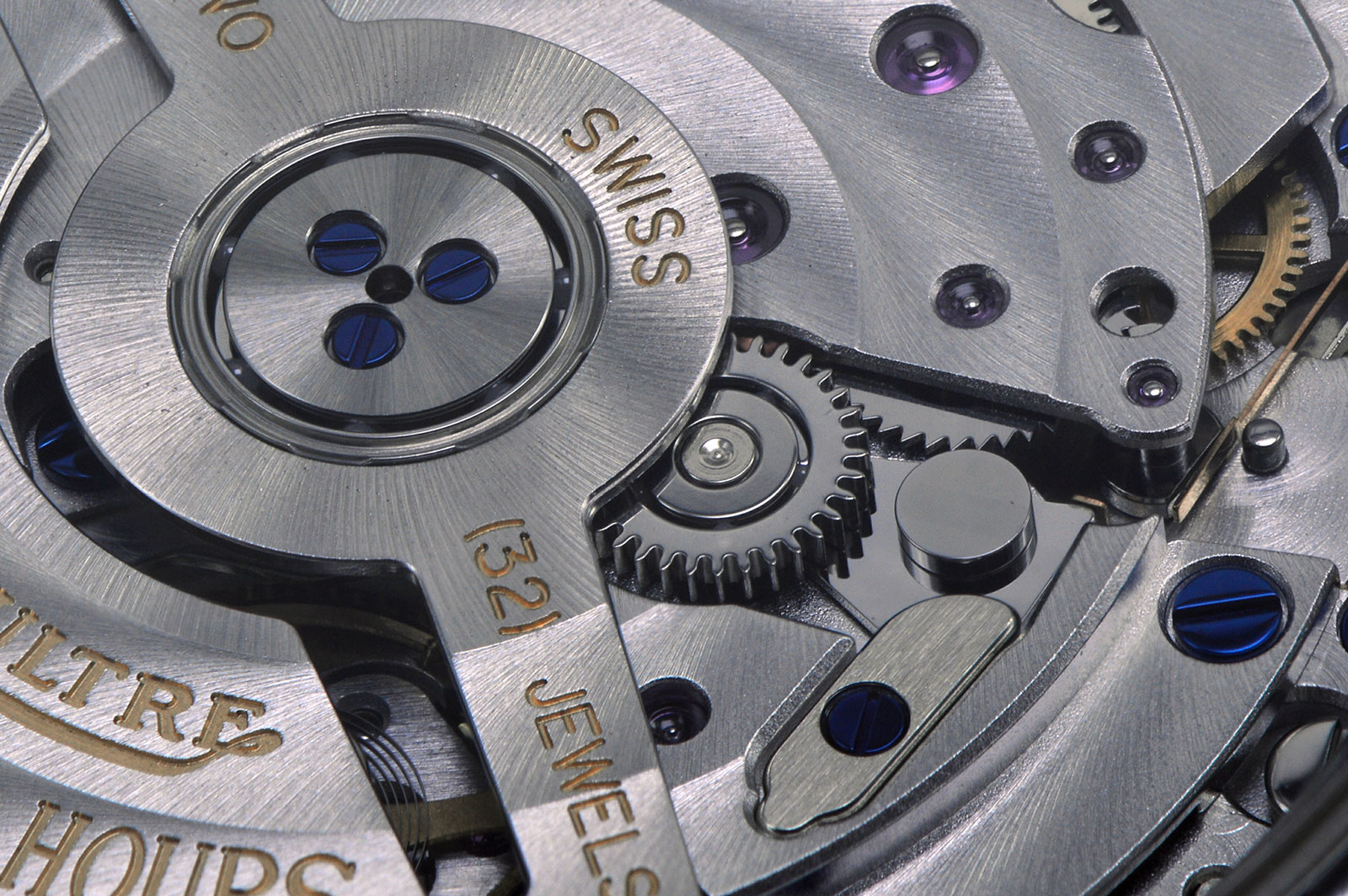
Overall, the cal. 899 is a traditional Swiss automatic movement with some modern elements such as its ceramic ball bearings and free-sprung balance wheel. As far as the eye can see through the case back, the overall movement is solidly executed with finishing flourishes and presents the majority of the timepiece’s value.
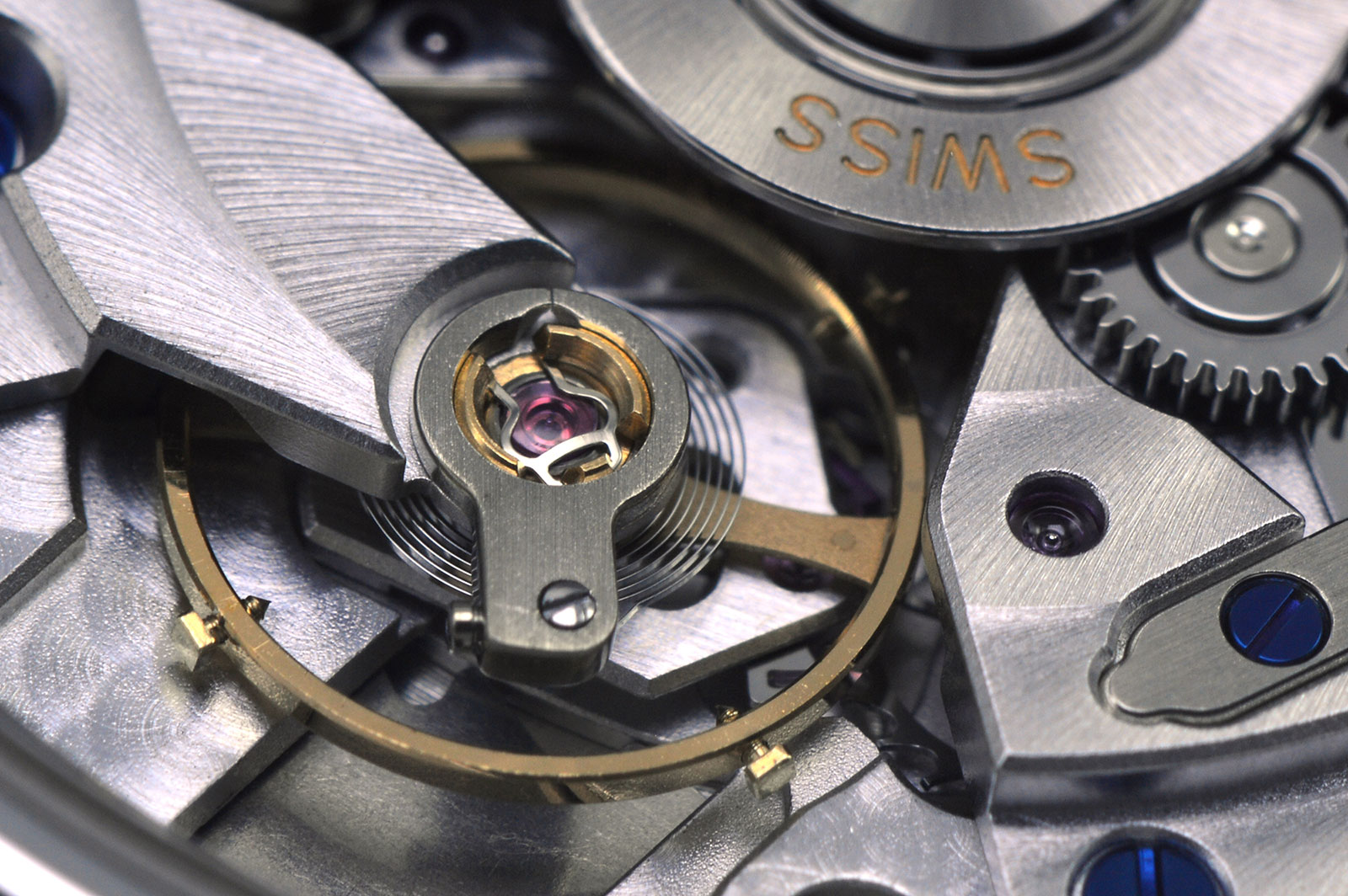
Distinctively different is the Snowflake’s cal. 9R65, which appears to come from a completely different philosophy of watchmaking. Noteworthy of course is the Spring Drive mechanism, which can be seen as a hybrid, utilising an electromagnetic brake for the regulator instead of the traditional Swiss lever escapement. As a consequence, there is no ticking at all – the seconds hand glides smoothly and quietly.
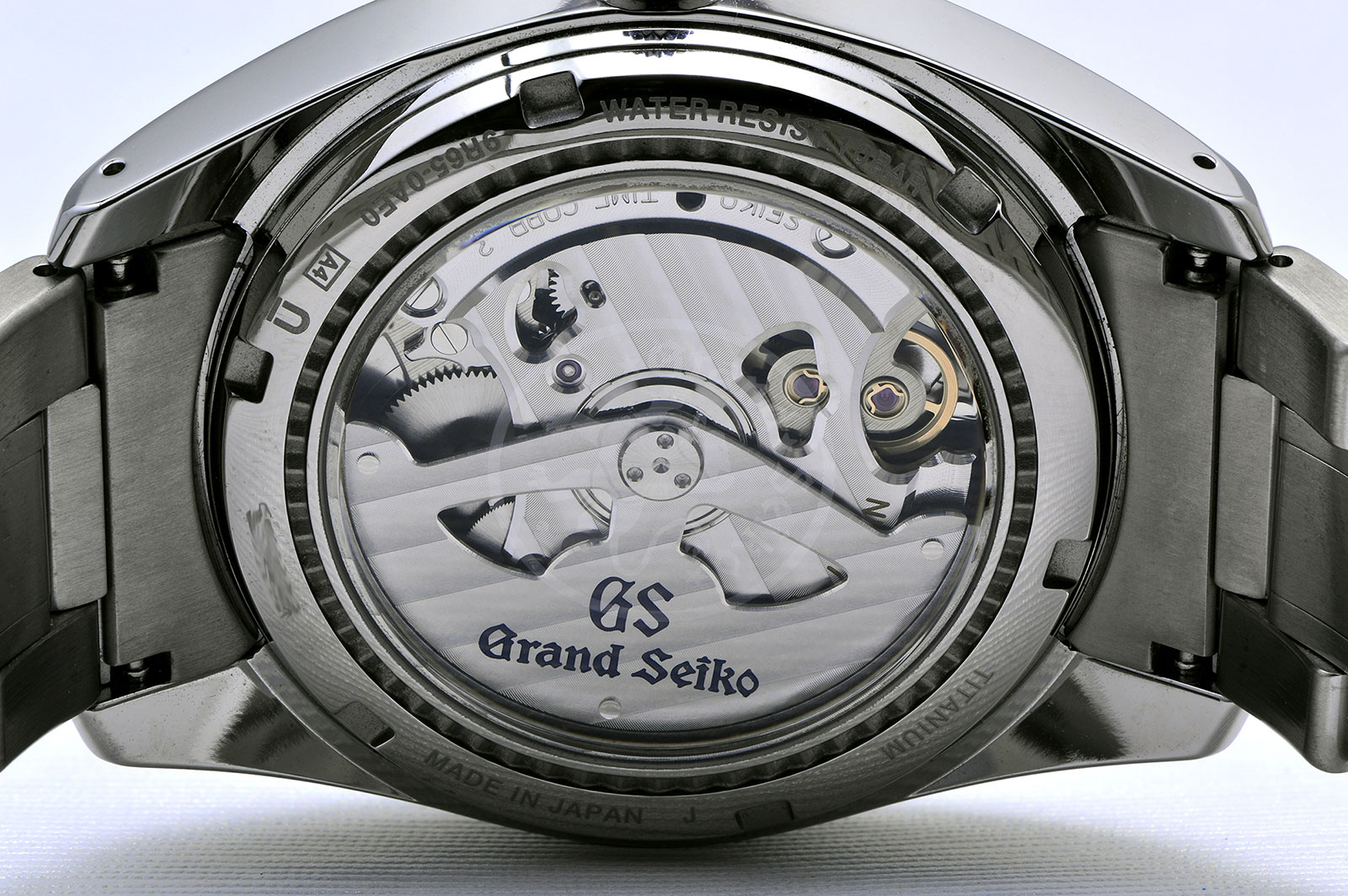
Aesthetically, the movement features a colder, monotone, industrious appearance compared to the more stylistic Jaeger-LeCoultre movement that has more details and colour. Finishing-wise, the Grand Seiko movement is neatly and consistently executed for the most part, but is clearly all machine finished.
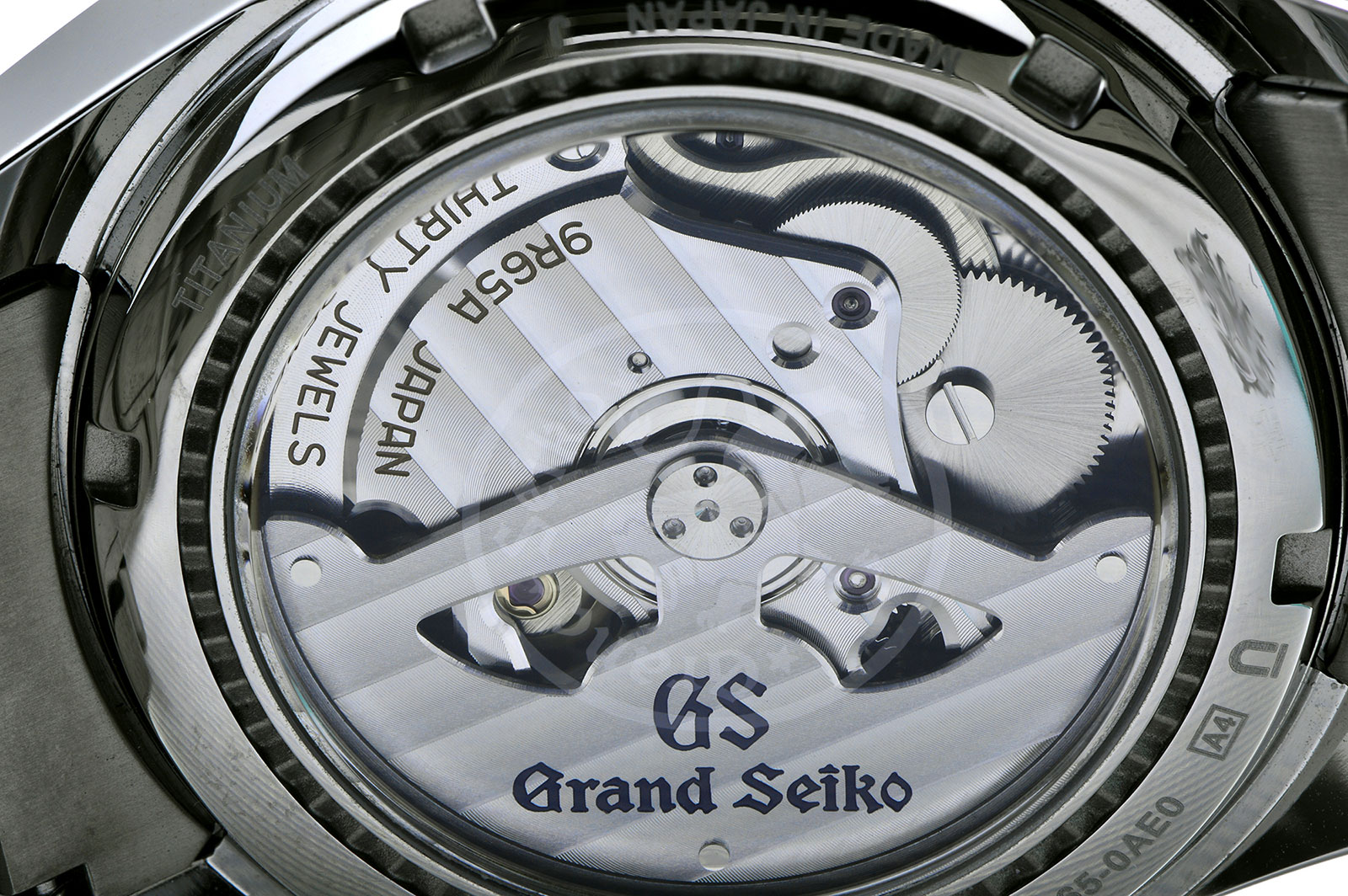
The striping done on the bridges and rotor are wide and very consistently applied, whilst thick machined bevels are visible along the edges. The fonts on the bridges appeared to be filled in with paint which are the only touch of visible colour. None of the screws are heat-blued. The finishing on Grand Seiko movement makes no attempt to resemble the look of hand-finishing, unlike the Jaeger-LeCoultre.
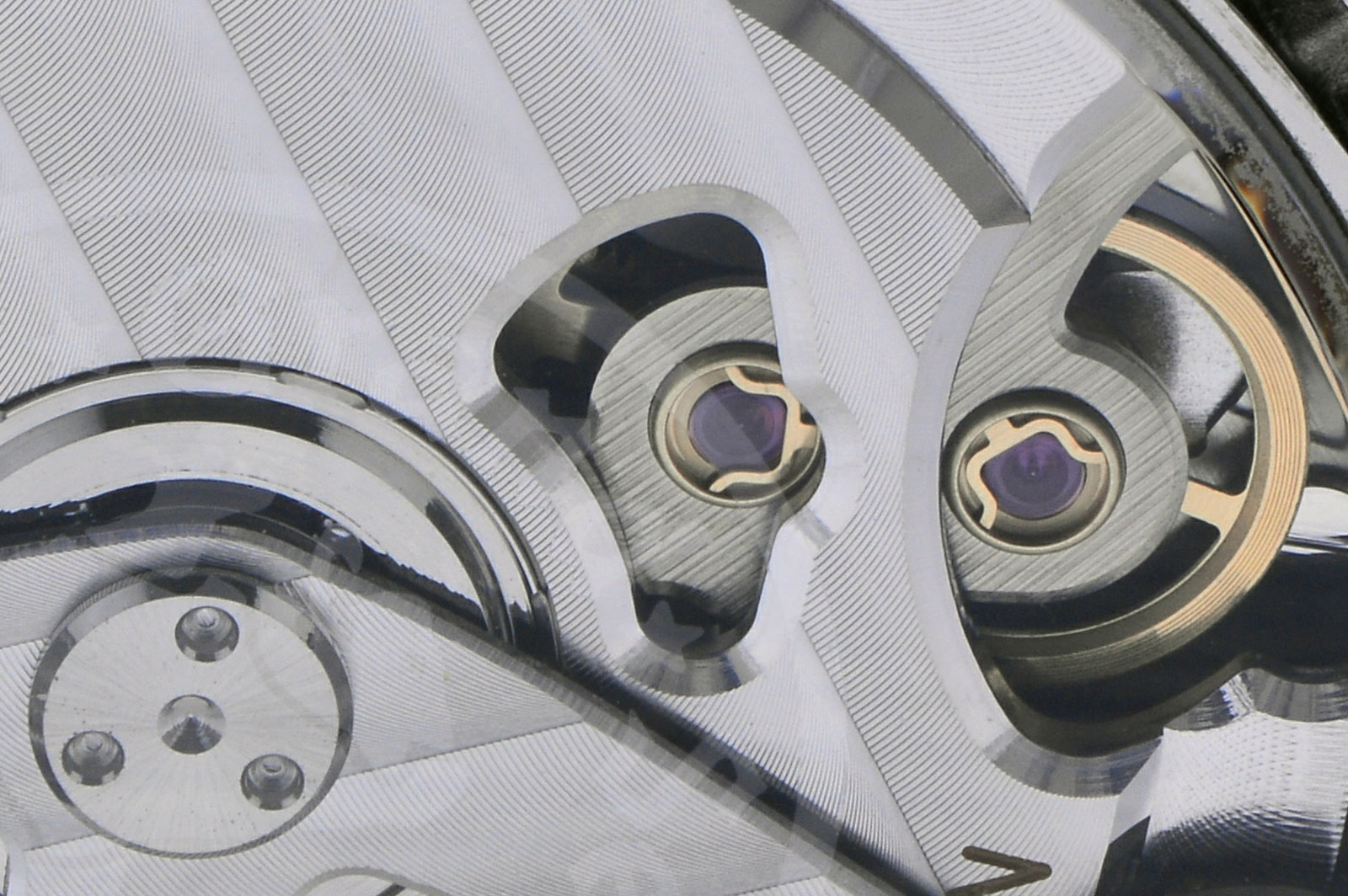
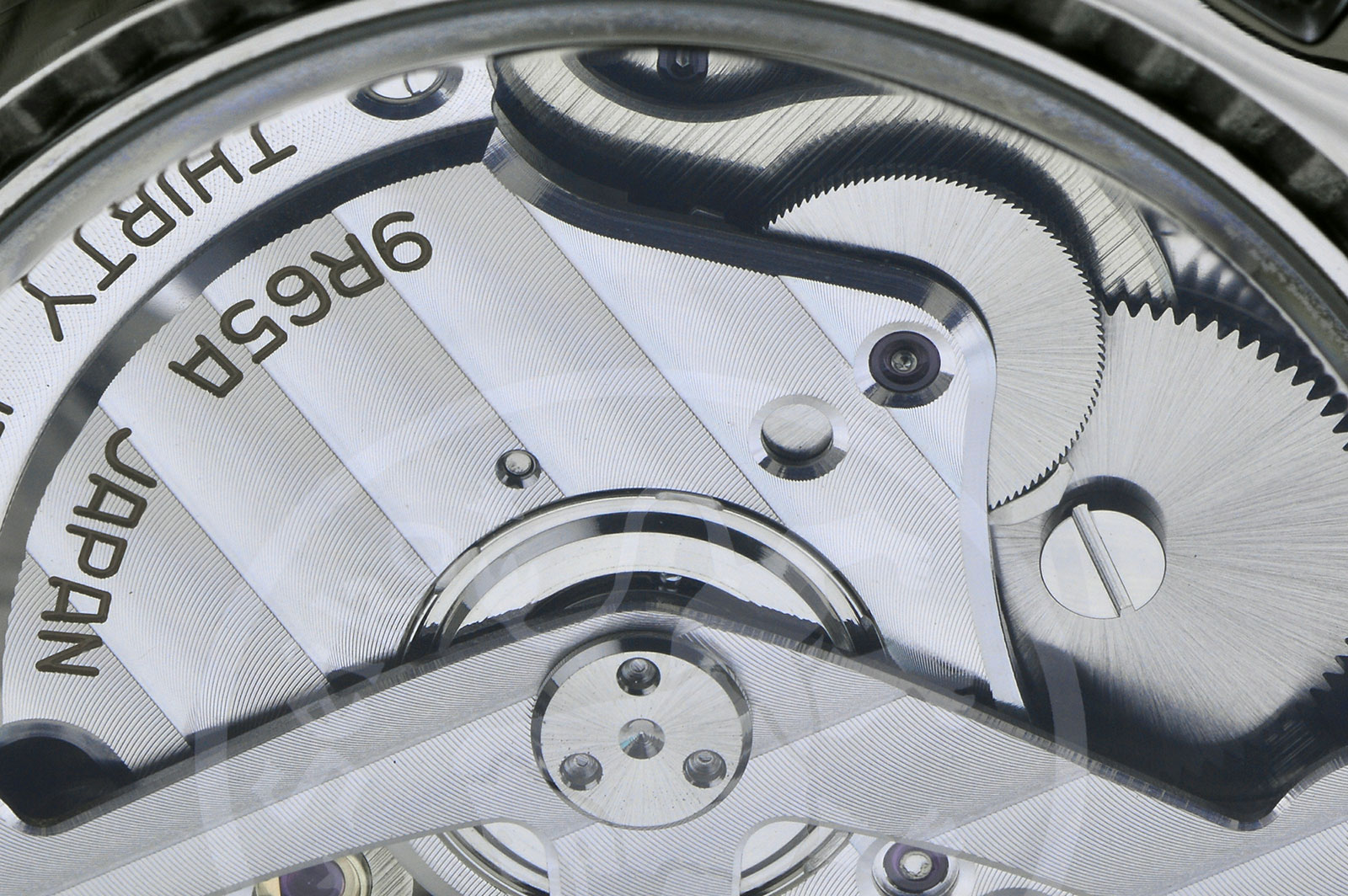
One of the more attractive elements is the beautifully polished winding click, which has rounded bevels along its edges, albeit slightly unevenly done.
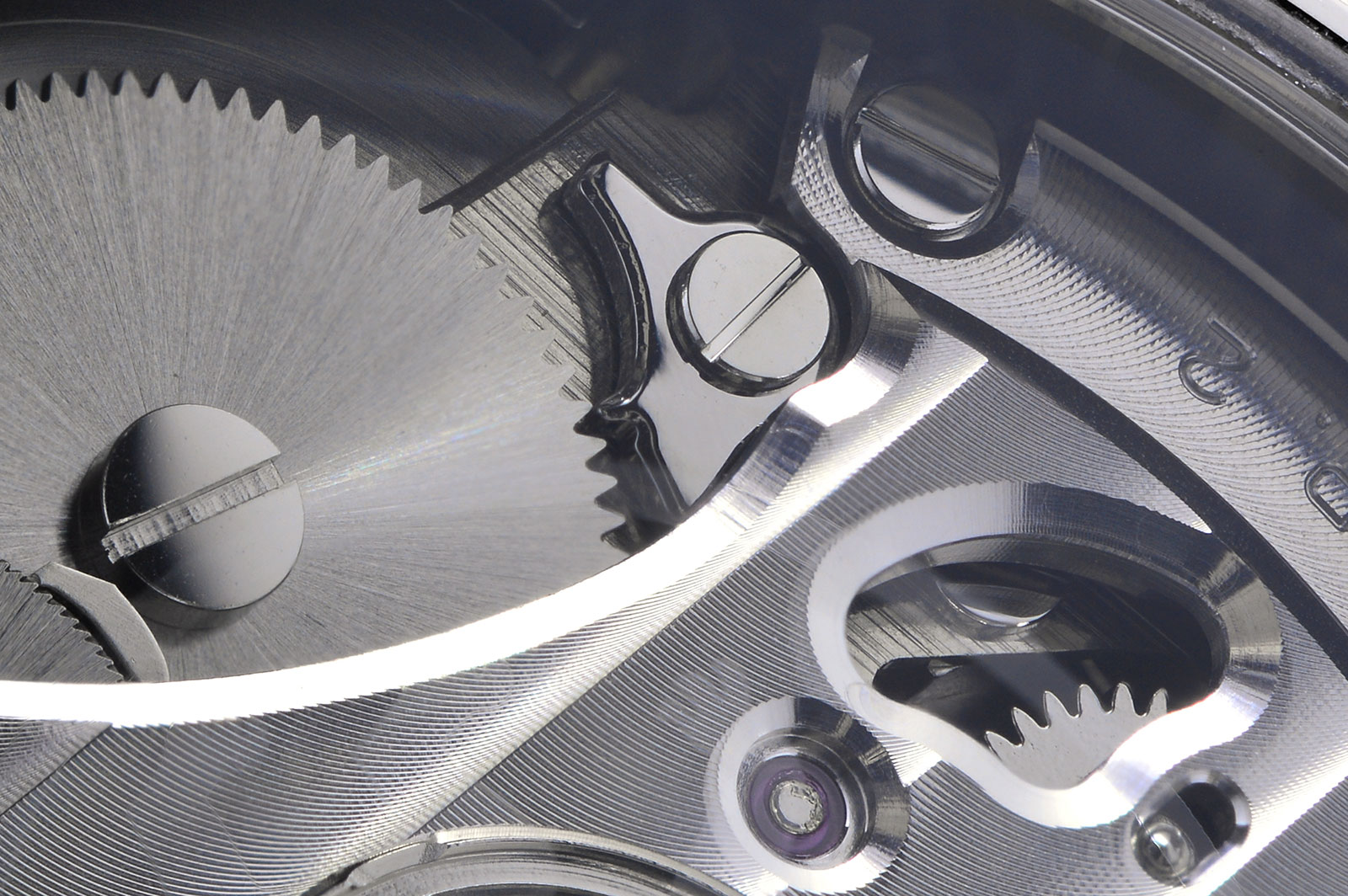
Conversely, the main plate underneath is not too well decorated – the brushed finished takes on a more pedestrian look that is reminiscent of Seiko’s lower end models, giving the impression that more effort was put into to decorating the more visible rotor and bridges above. This is arguably the main area where embellishment appears lacking.
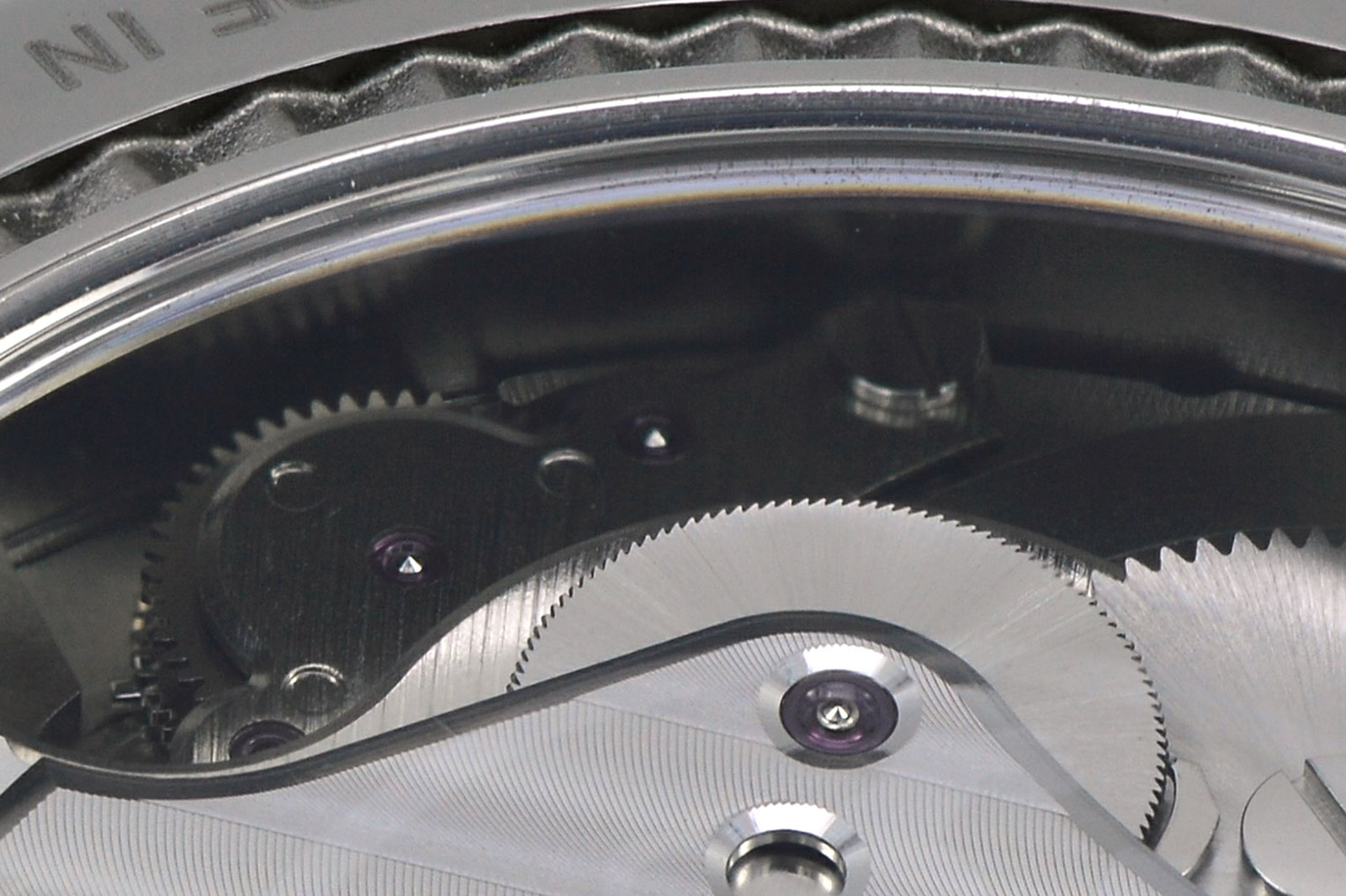
Movement decoration is where the Snowflake falls short, but it is a shortcoming accentuated only with a side-by-side comparison with the Master Control Date.
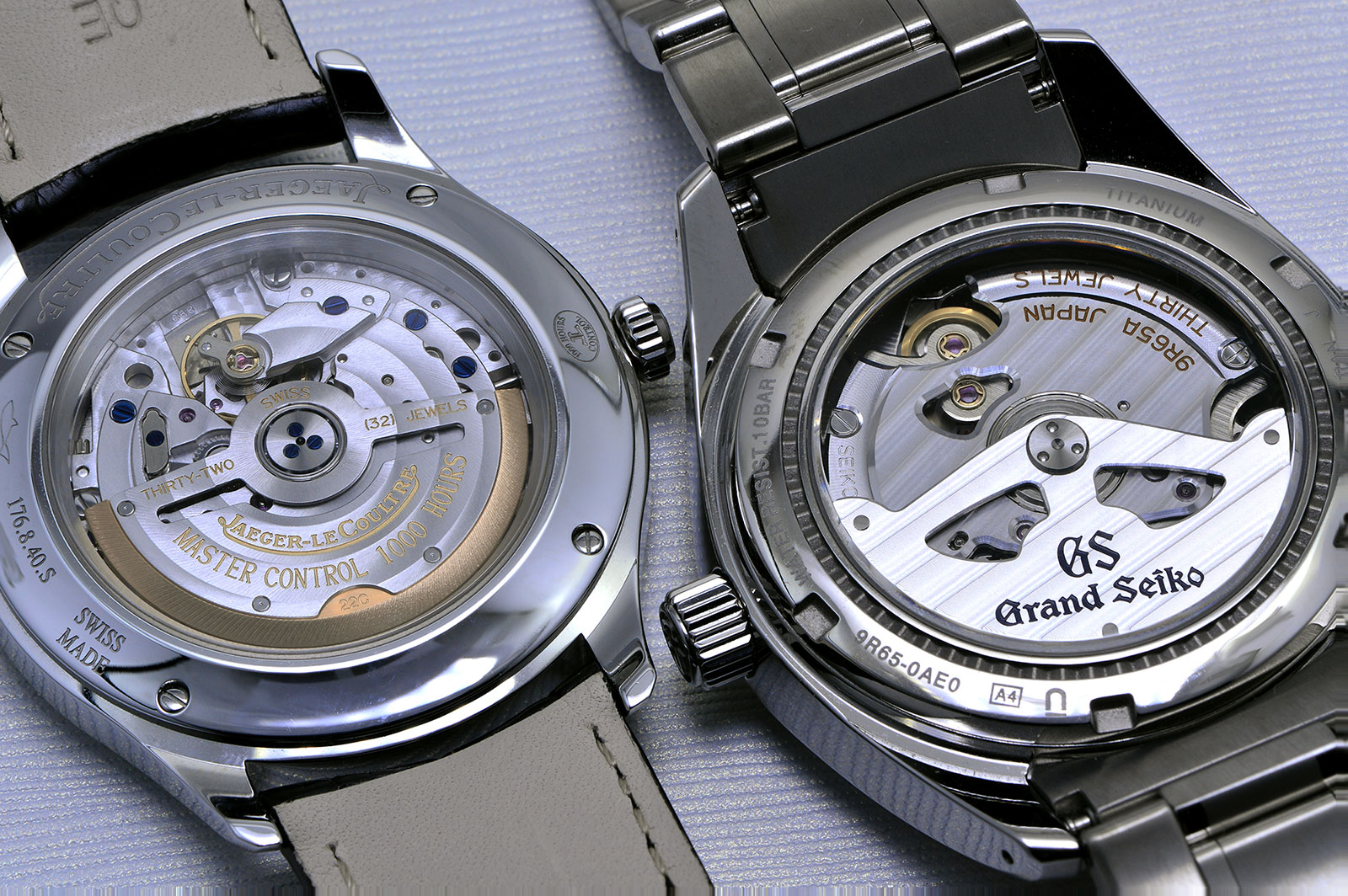
Bracelets and straps
The Master Control is attached to an alligator strap (probably made by Paris-based Camille Fournet, which supplies a host of brands) that has curved spring bars to conform to the case shape, leaving no gap between the strap and case.
It’s accompanied by a simple double-fold buckle that clicks into place, and requires slight force to pop open. The clasp is highly polished throughout all surfaces and has a cleanly engraved logo. Overall, it’s fuss-free and does its job.
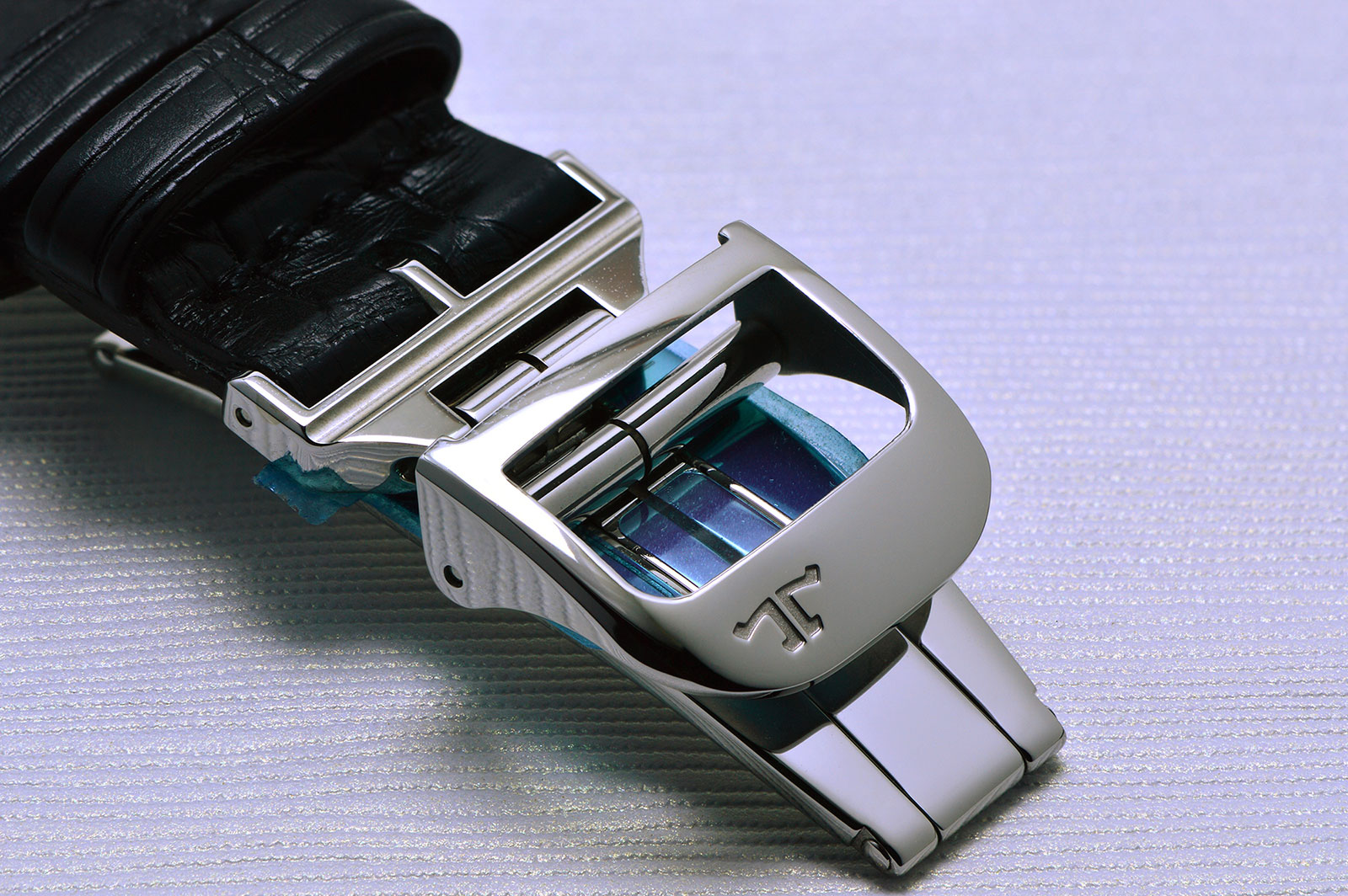
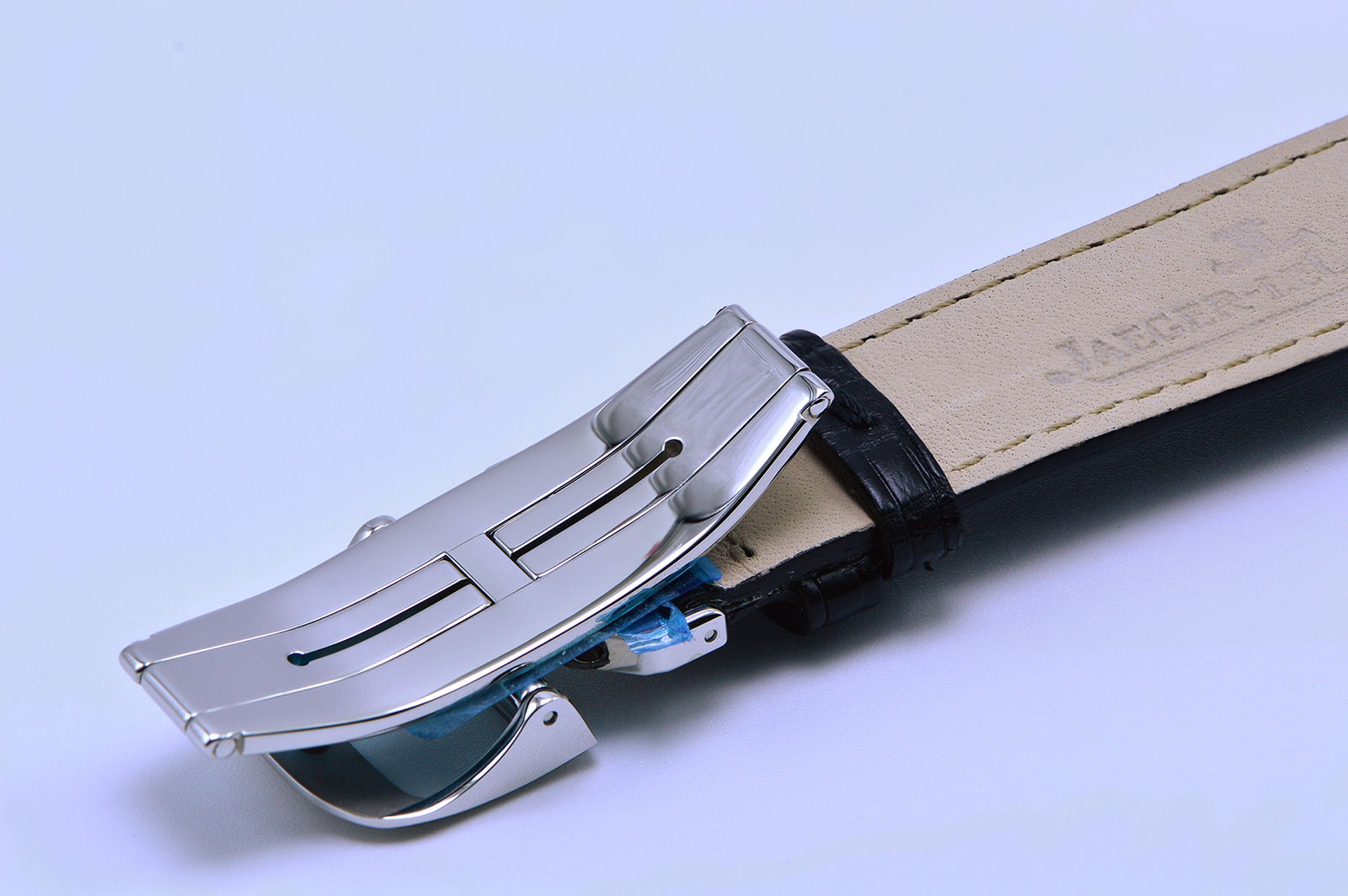
Comparatively, there is more to the Grand Seiko in this respect. The Snowflake is equipped with a titanium bracelet as standard. It’s a “five link” bracelet, consisting of two outer links, and a centre link made up of three parts (a brushed centre with polished flanks). Additionally, the bevels of the outer links are highly polished along their outer edges. And each link has a slight curve which allows better conformity to the wrist and incidentally, adds to manufacturing complexity versus flat links.
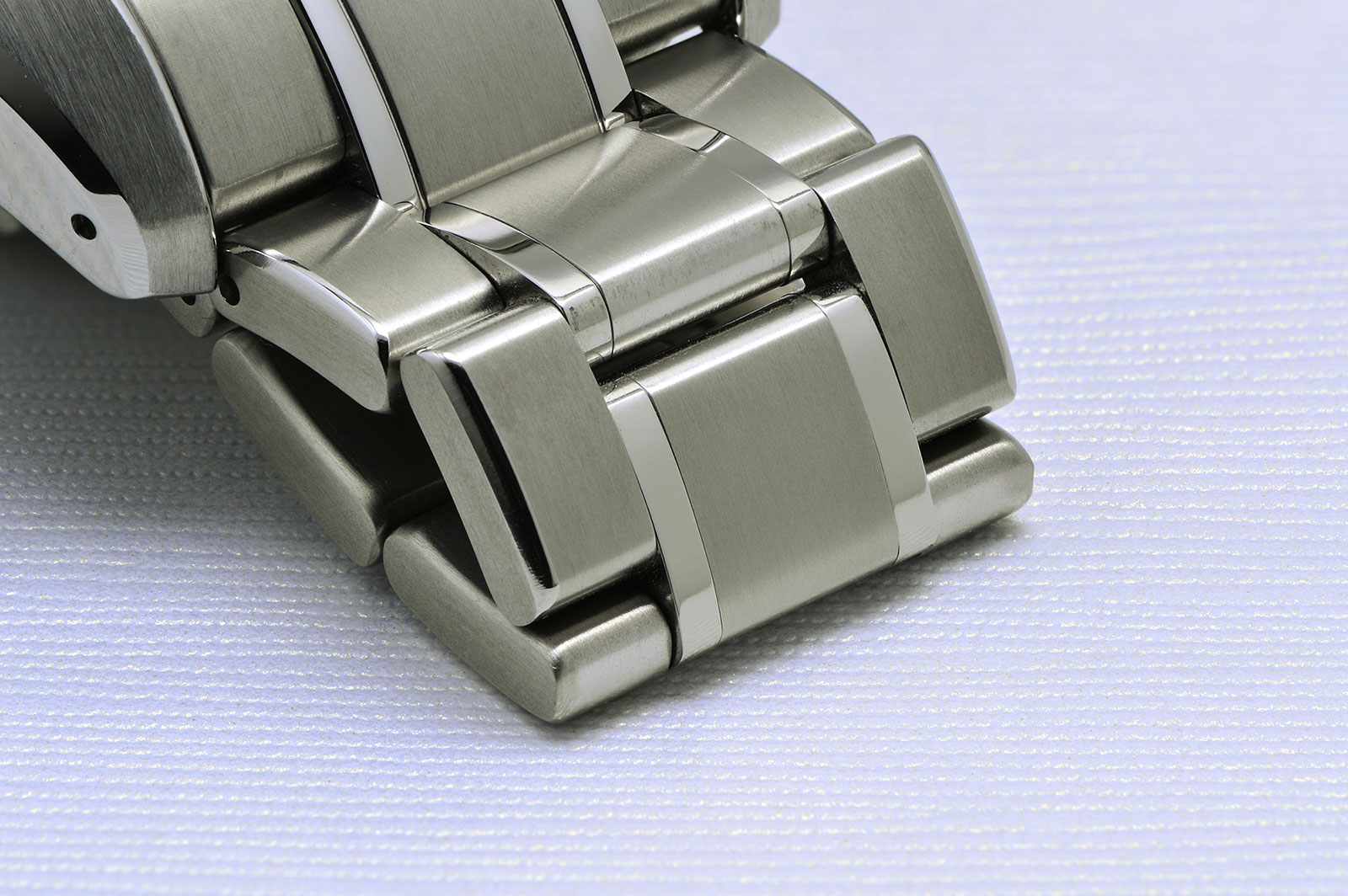
The clasp is of a standard, push button-spring release type with no micro-adjustment mechanism. In the centre of the clasp is a “GS” relief logo, similar to that found on the crown, that’s surrounded by a polished bezel.
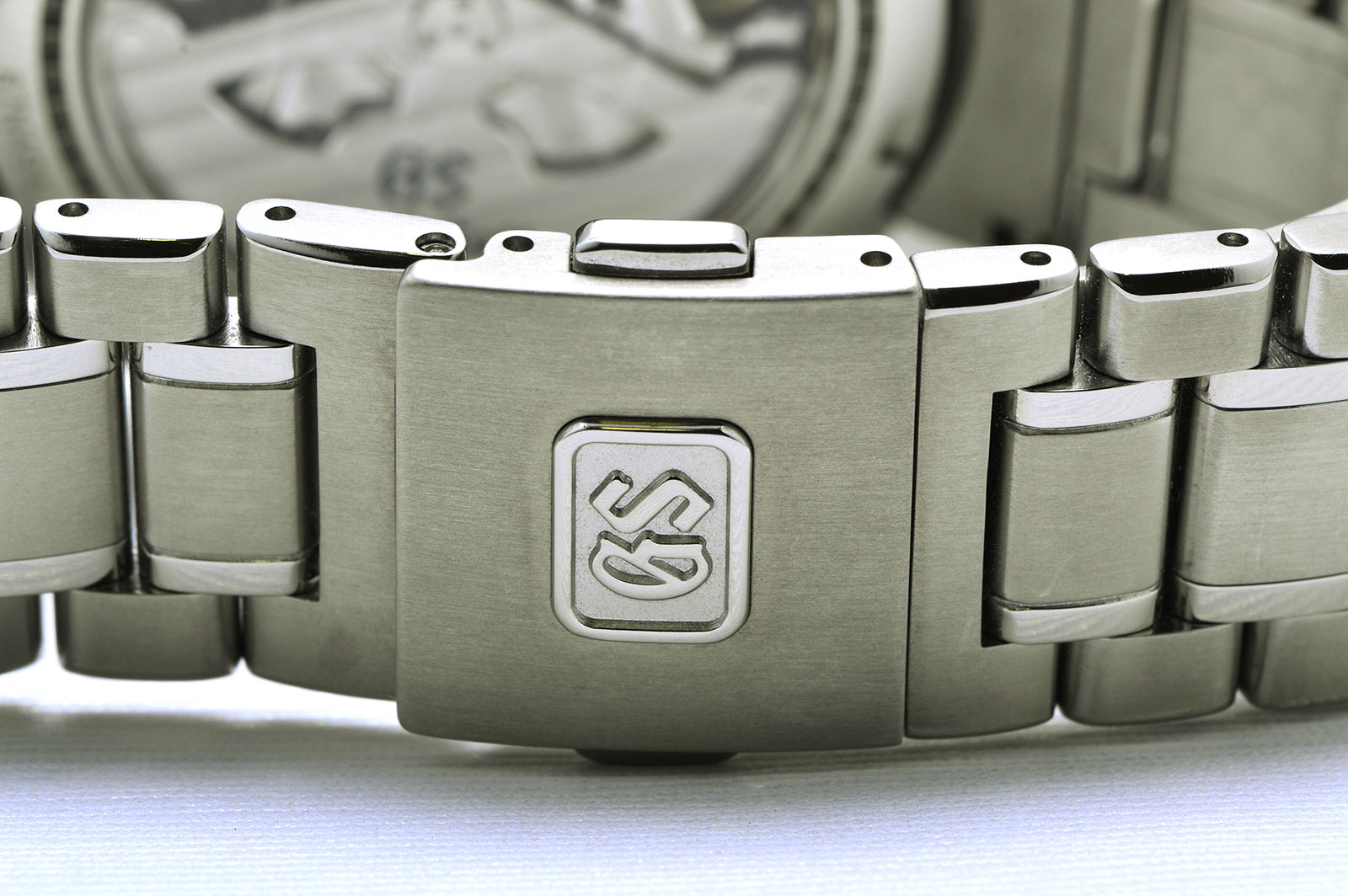
Perhaps the weakest link (pun unintended) of the bracelet are the end links – they have slight play when fixed to the case, leaving a tiny gap between the lugs and case visible upon close inspection. While the gap allows for easier removal of the end links, especially when using a basic spring bar tool, a plier-type spring bar tool can be safely used remove snugly fitted end links without any damage to the lugs.
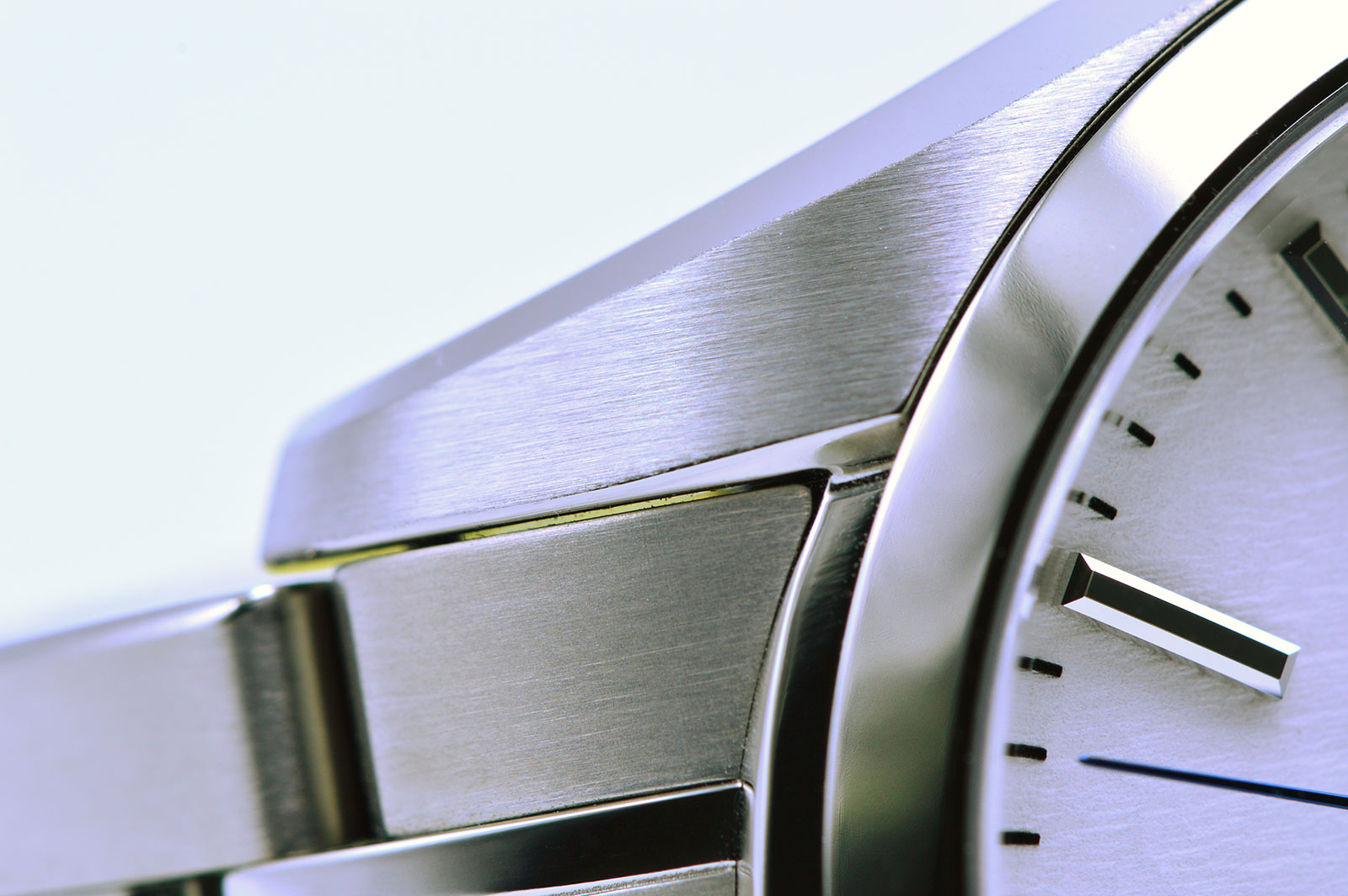
Another slight inconvenience of the bracelet is the fastening method of the links. Compared to the Grand Seiko steel bracelets that use regular screws to hold the links together, the titanium bracelets utilise a pin and collar system (evidenced by visible by the holes on the side of at each link) that requires specialised tools to resize.
Given the somewhat elaborate construction of the bracelet, the Snowflake presents a greater sense of manufacturing effort here compared to the Master Control on strap. That being, said there is a steel bracelet available for the Master Control, however it costs an additional US$1800, which significantly widens the price discrepancy between the two.
Conclusion
The comparison between two popular options in this category is insightful in identifying the particulars that illustrate quality, and which might entice potential buyers. In this case, the Master Control Date offers an elegantly slim dress watch with a decently attractive Swiss movement. Alternatively, the Snowflake expresses intricate work on its case, dial and hands but arguably with less focus on movement decoration.
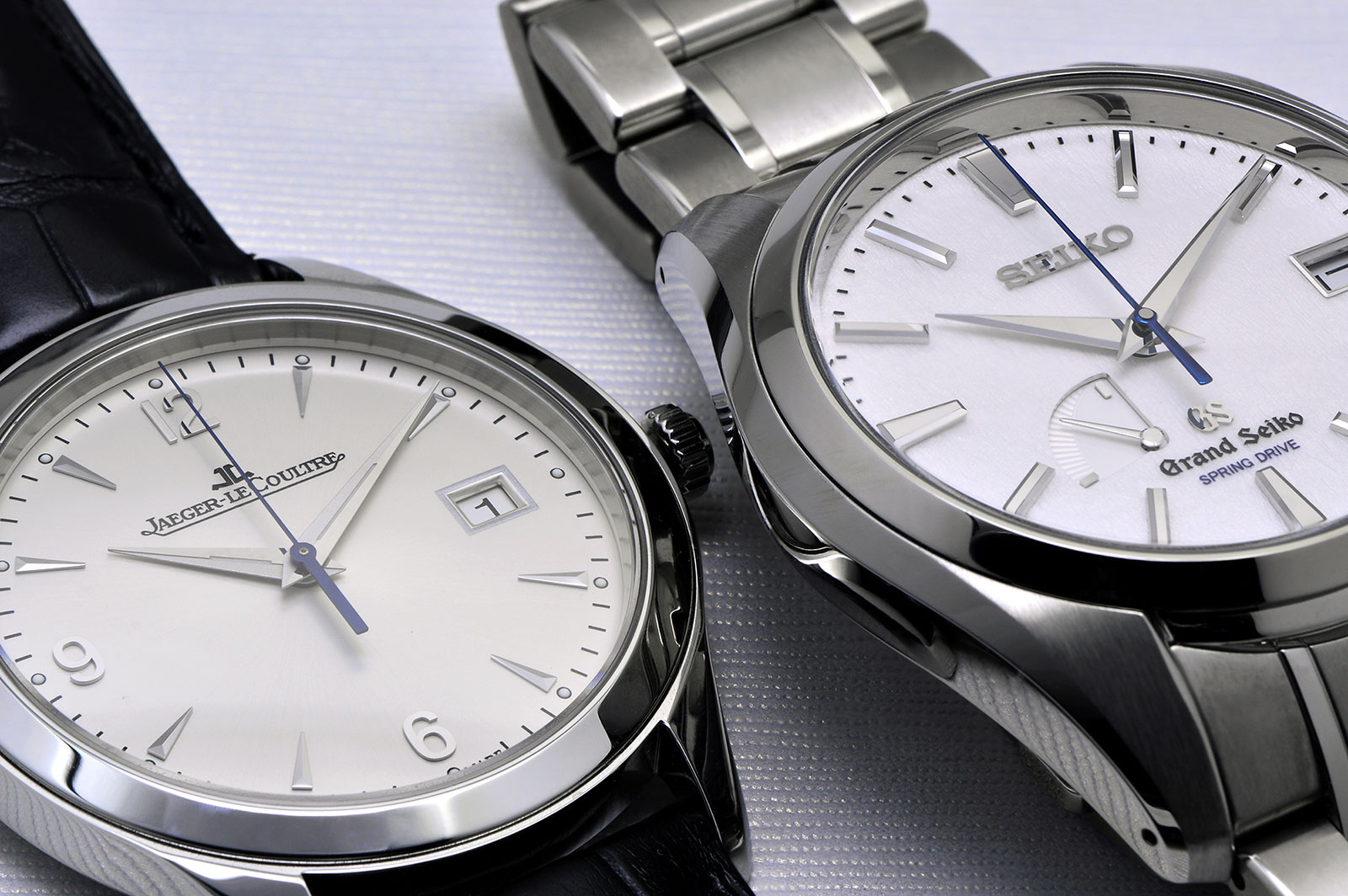
The current Jaeger-LeCoultre Master Control Date in stainless steel retails for US$6350 on a leather strap, and US$8150 with the steel bracelet. That is a little steep versus the competition for a simple dress watch.
The Grand Seiko “Snowflake” (now the SBGA211) in titanium retails for US$5800 on a bracelet – demonstrating the Japanese brand’s potential as a strong competitor to the conventional Swiss brands. Additionally, the addition of power reserve, titanium case and bracelet, as well as the excellent dial appears to be the more compelling value purchase here.
For similar value, other watches with complications, such as the Omega Speedmaster Moon Watch or Zenith El Primero, can also be had. But the caveat is that complications are usually inversely proportional to finishing: these are finished to a slightly lesser degree than the Jaeger-LeCoultre or Grand Seiko. At a fixed price point, that is natural as one can’t have everything – there has to be a trade-off.
Richard Lee is a collector based in South-East Asia. He has owned the JLC Master Control Date for three years, and the Grand Seiko “Snowflake” for a year.
Back to top.
